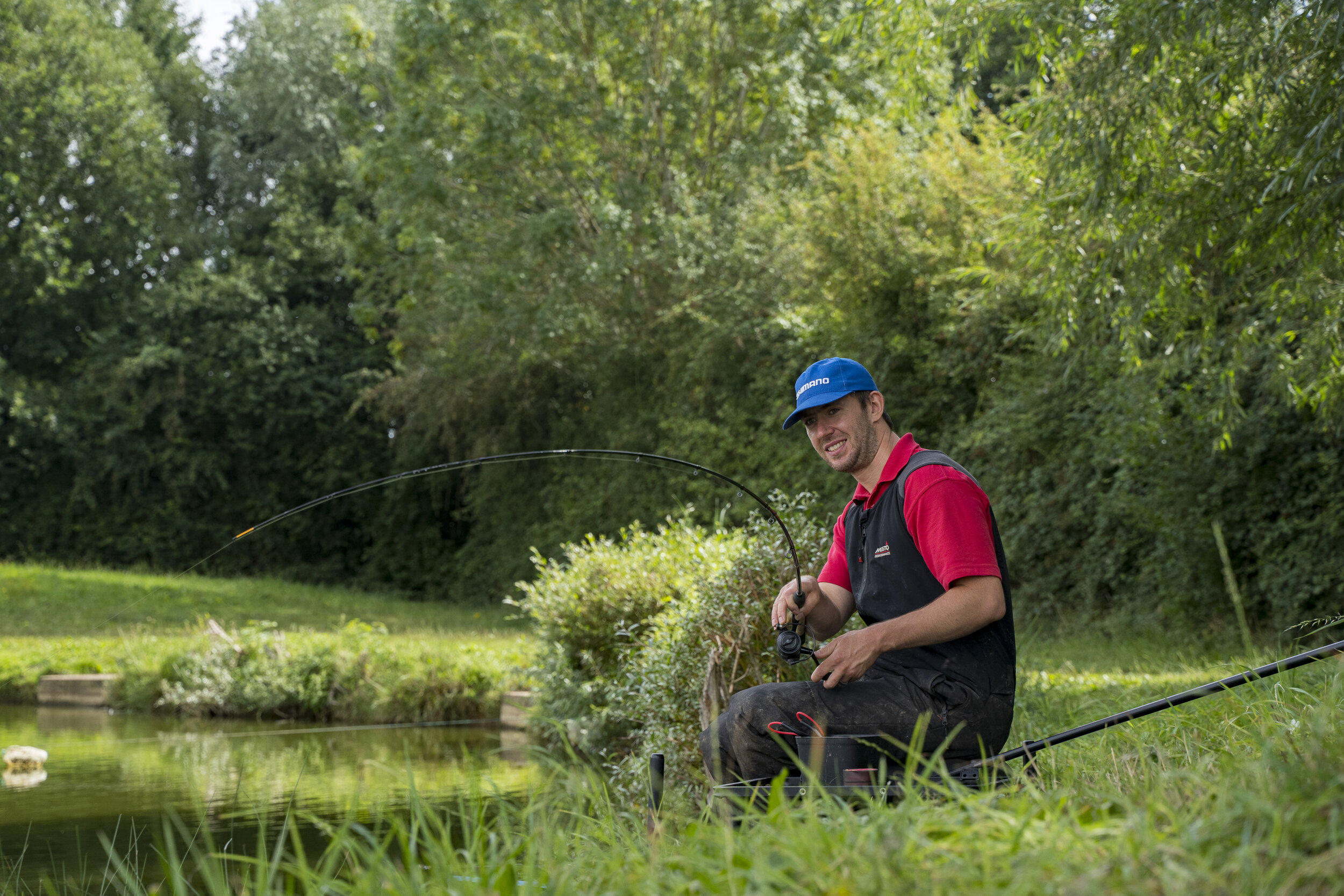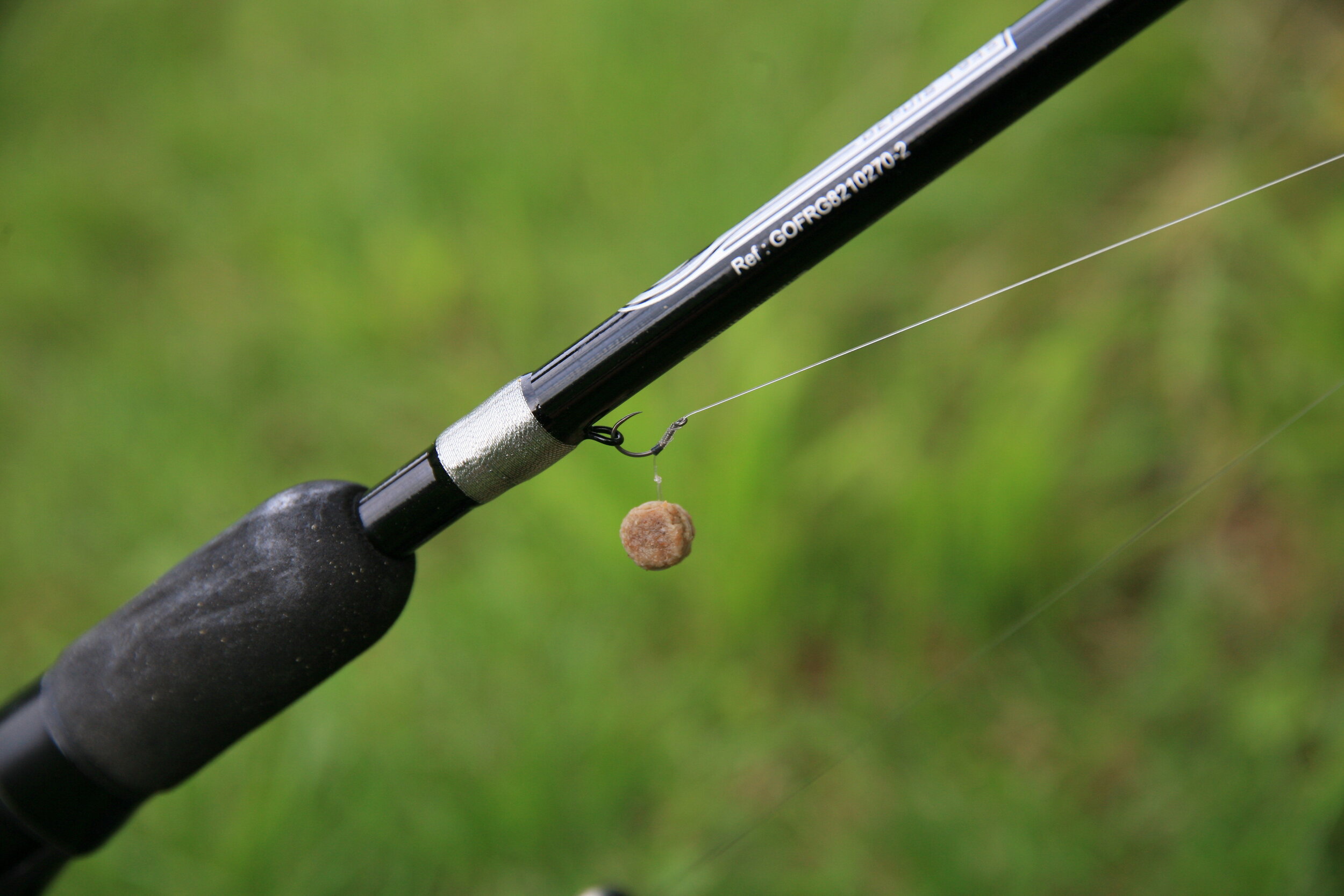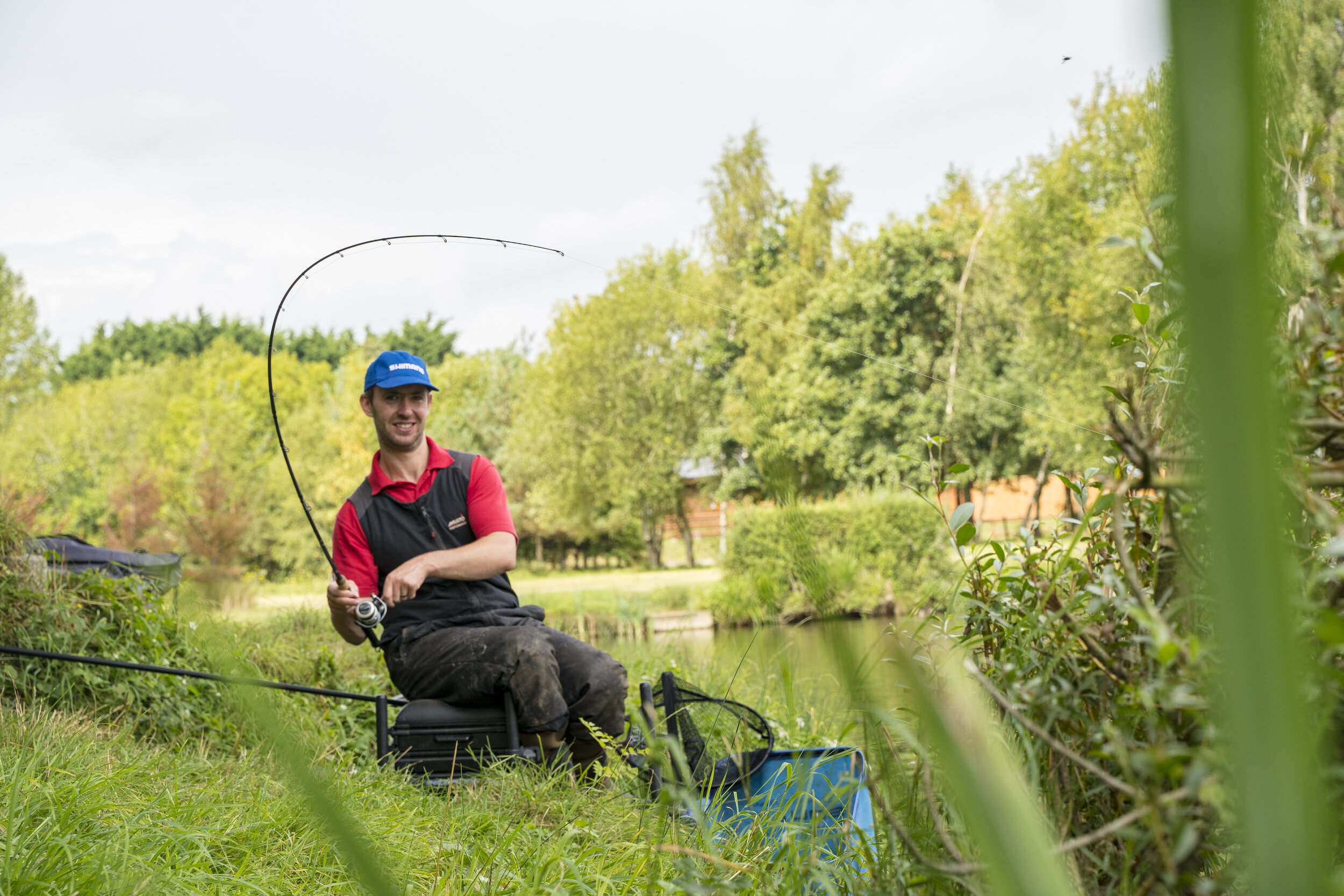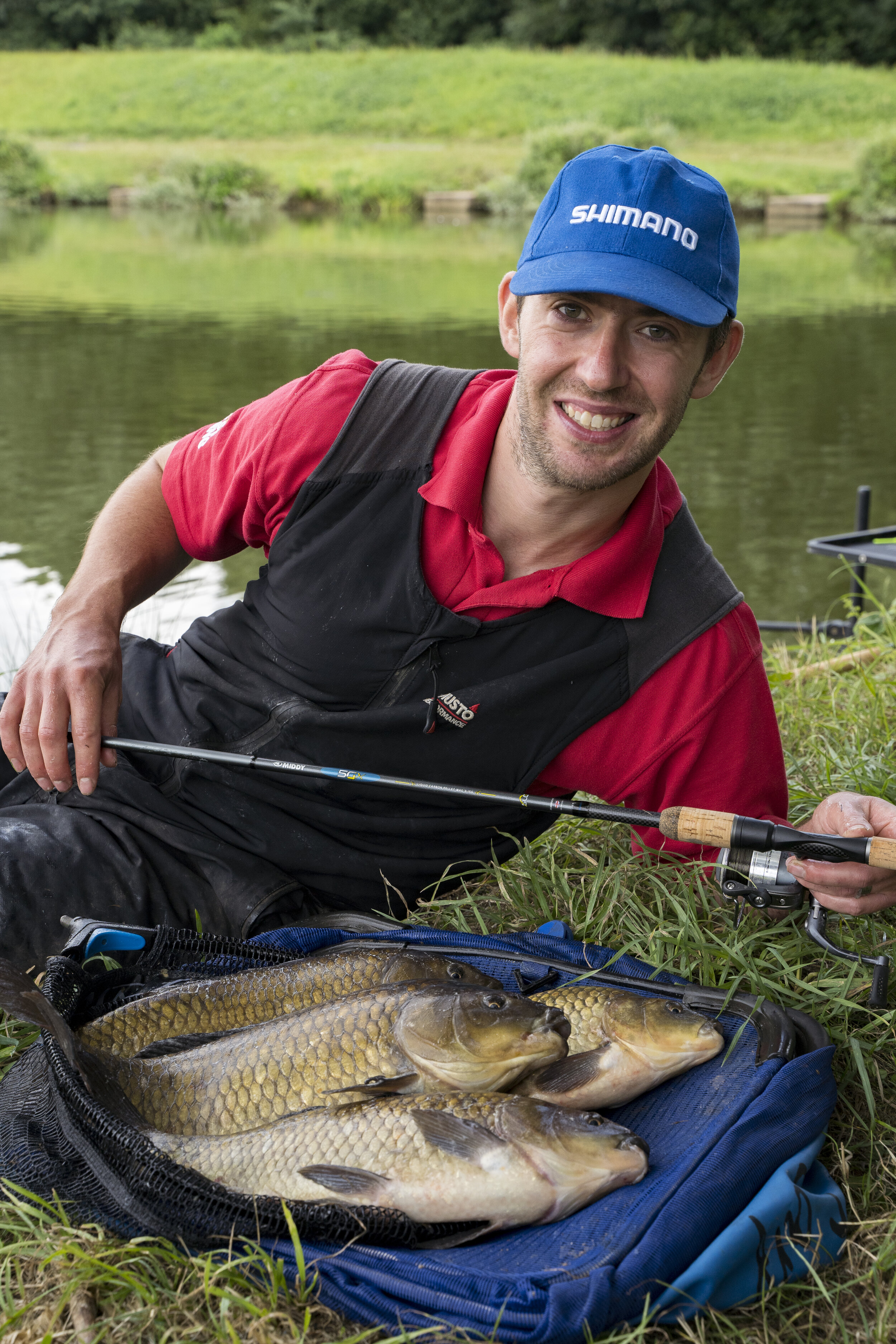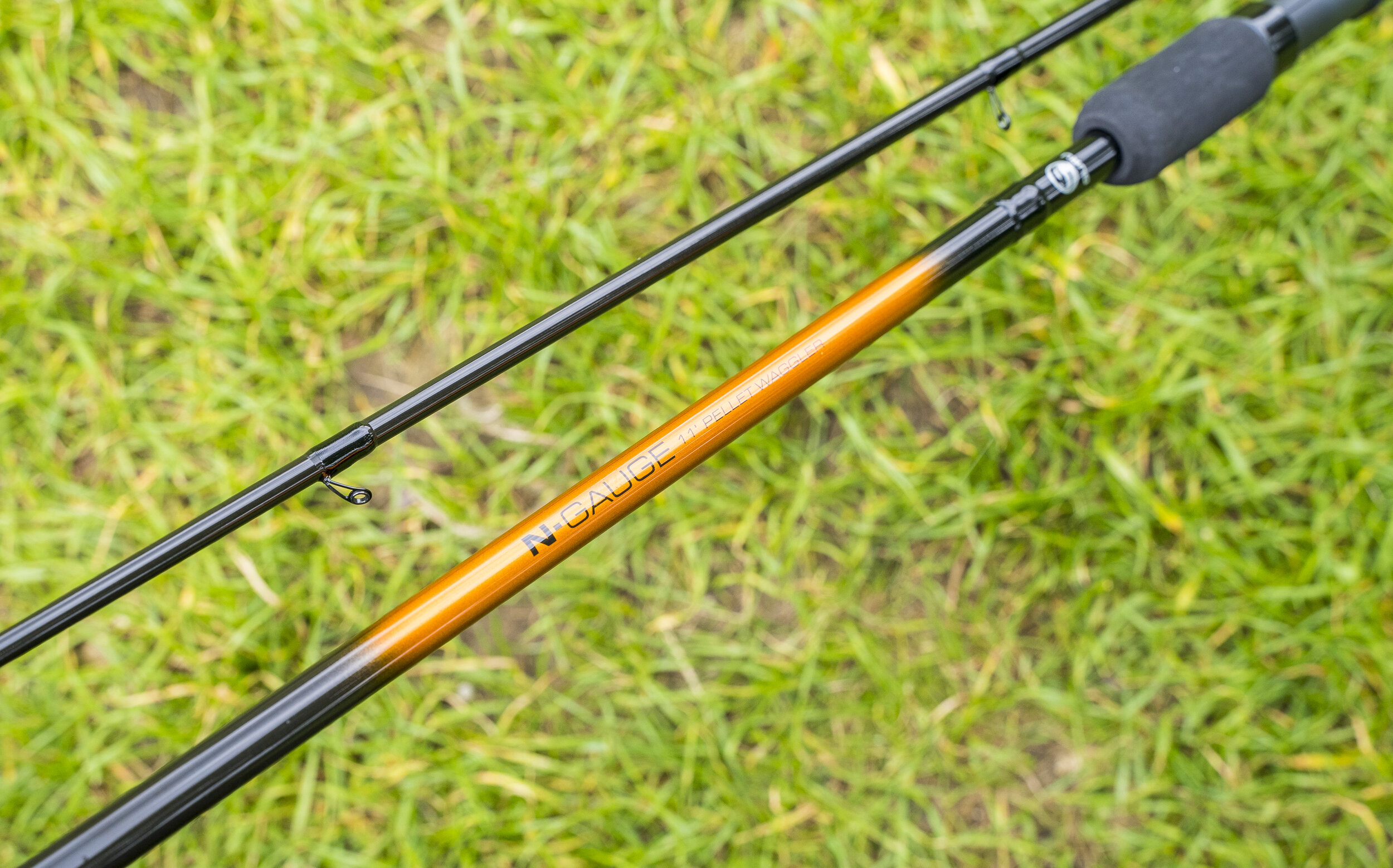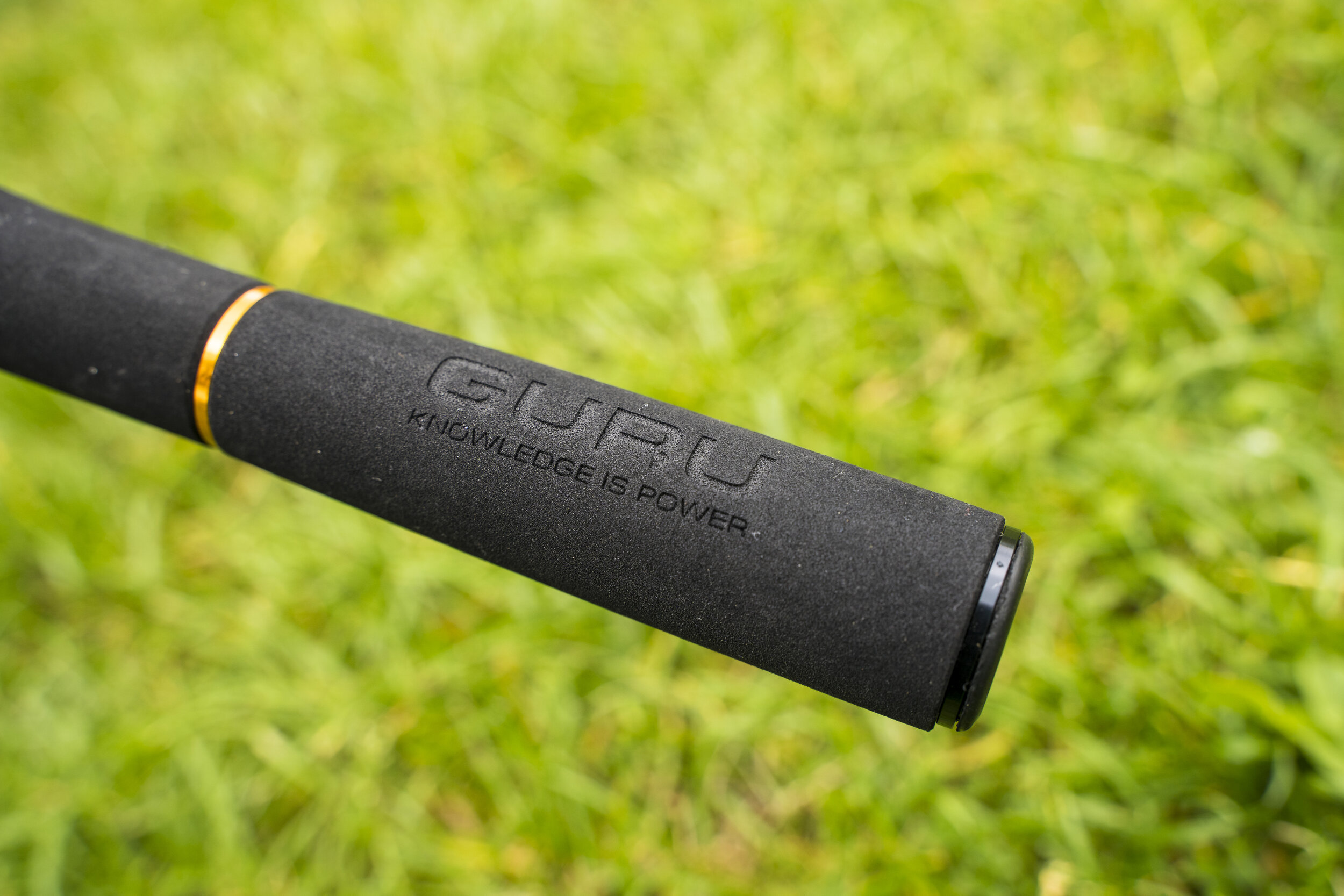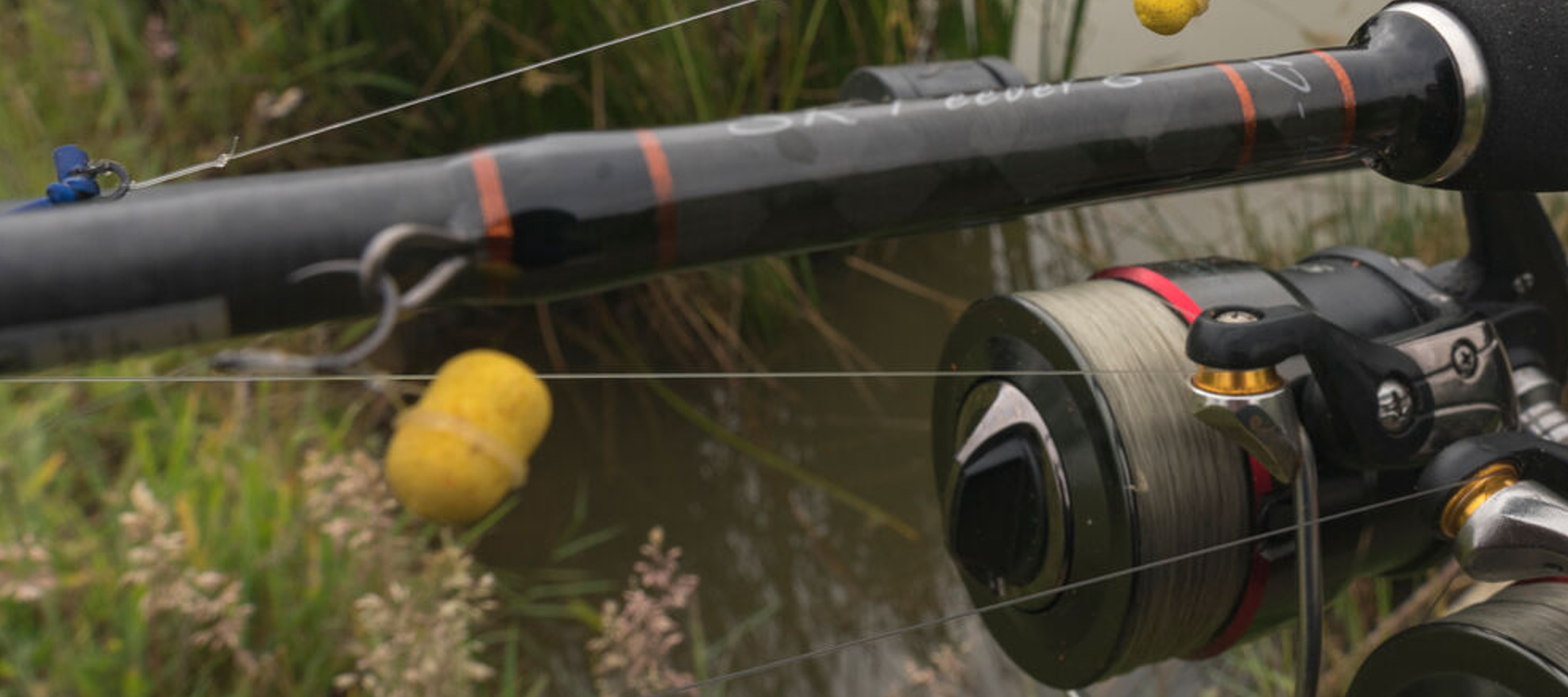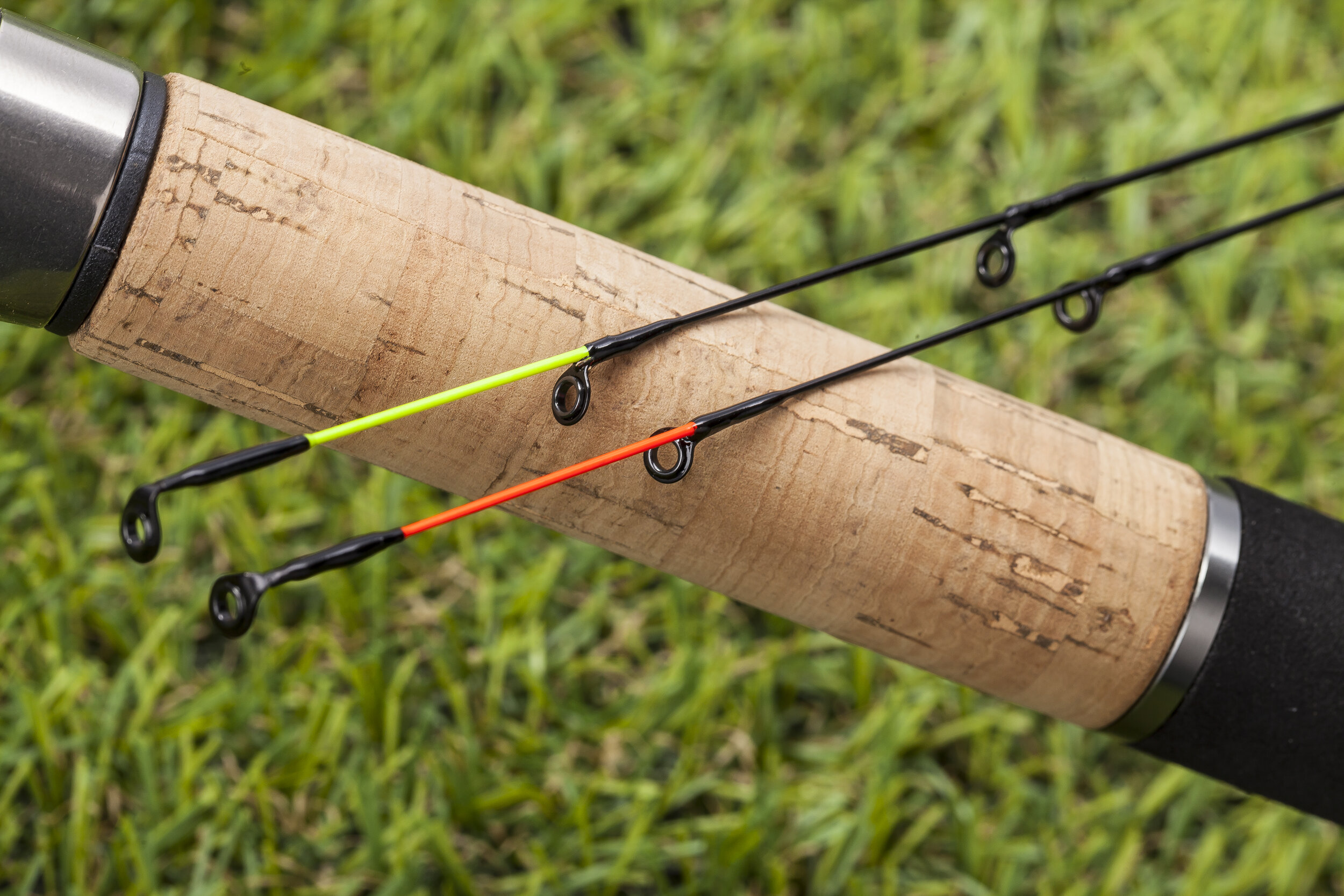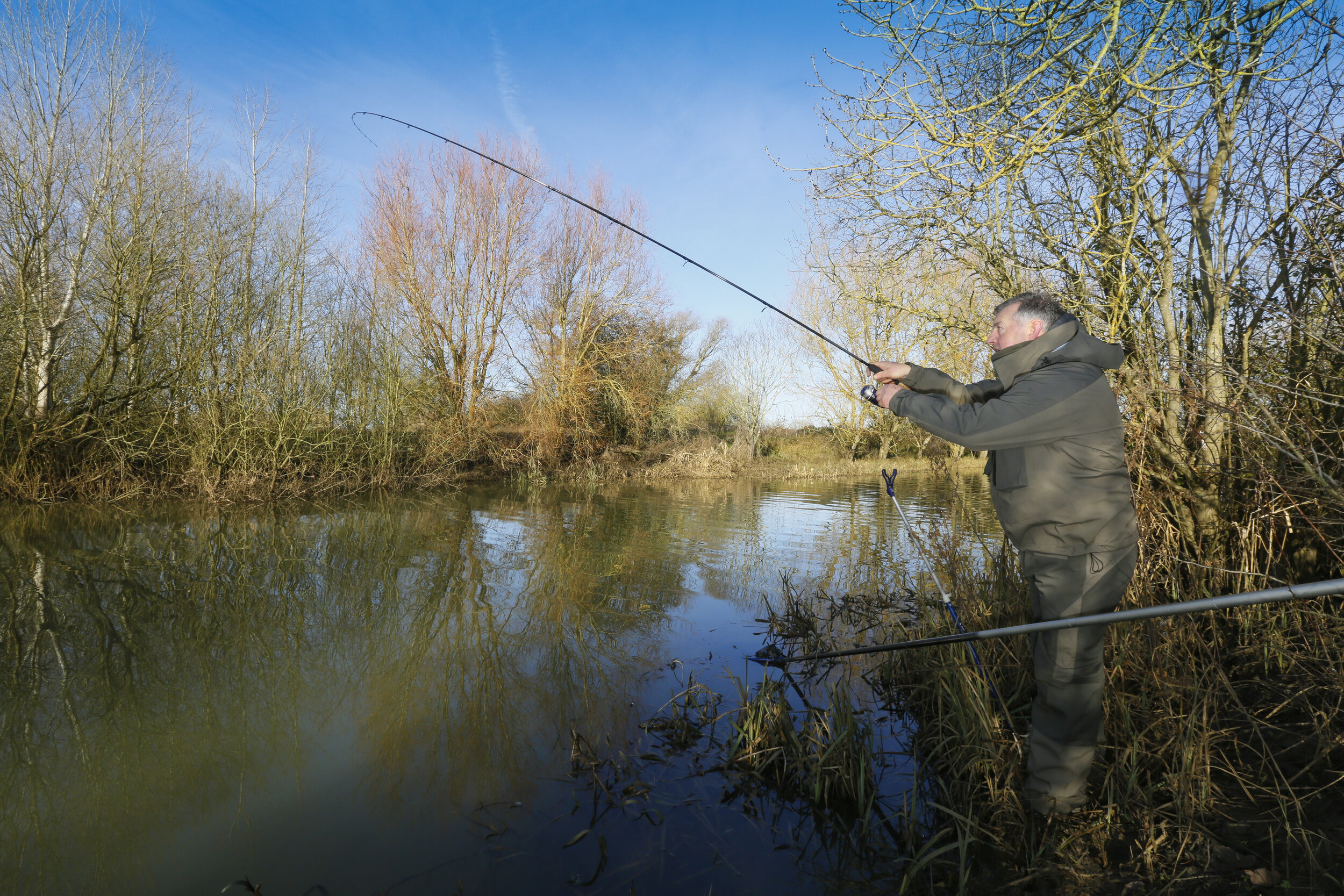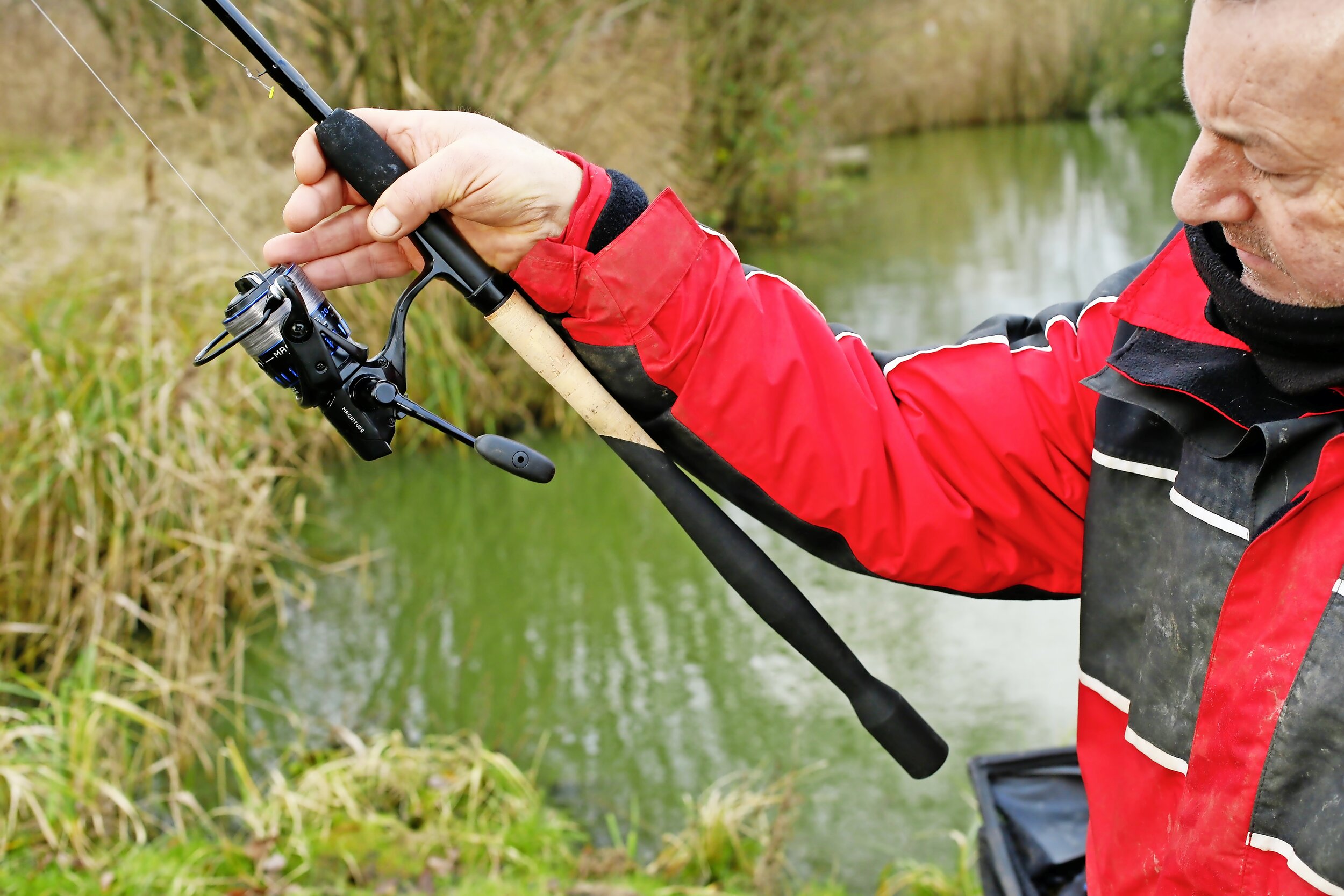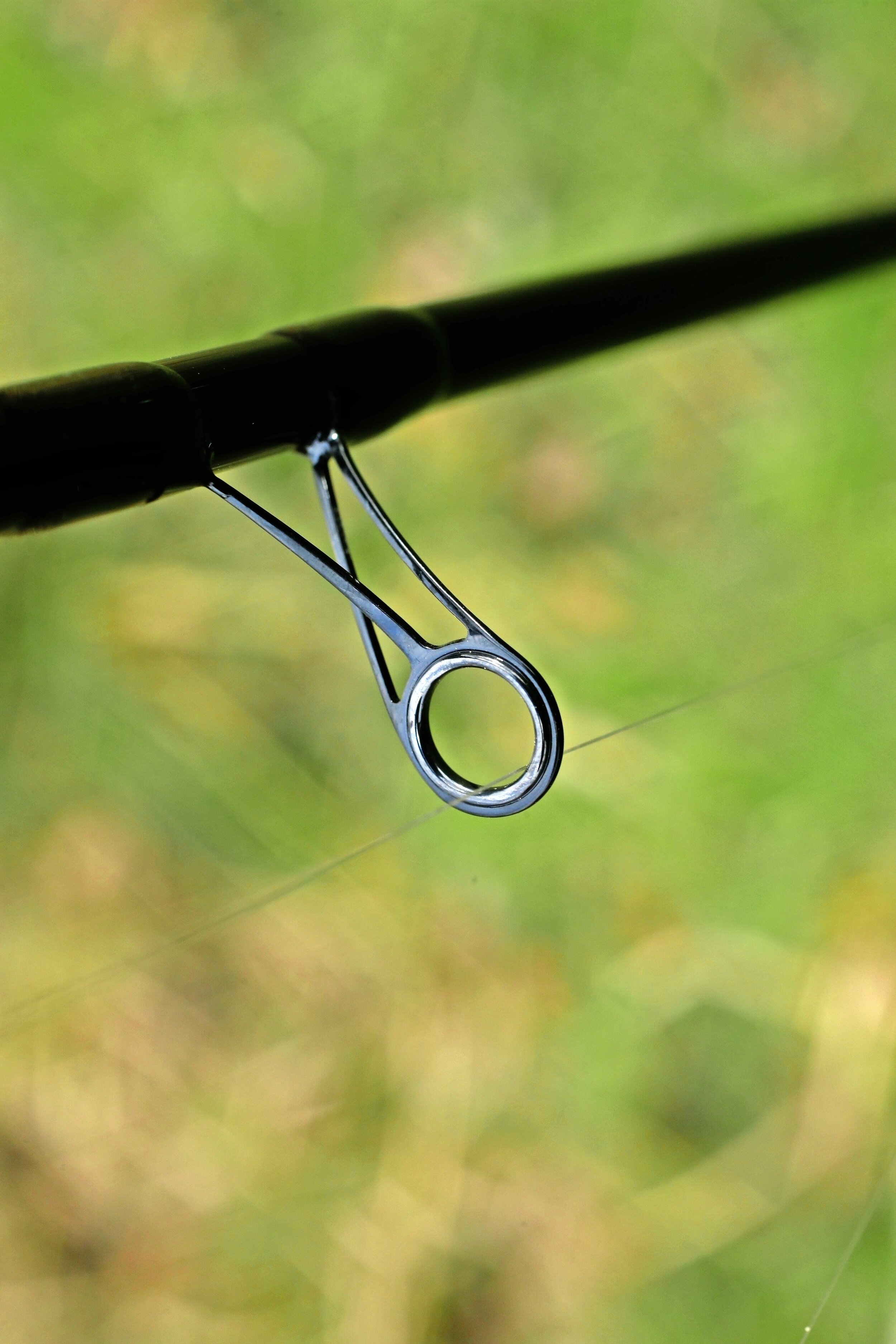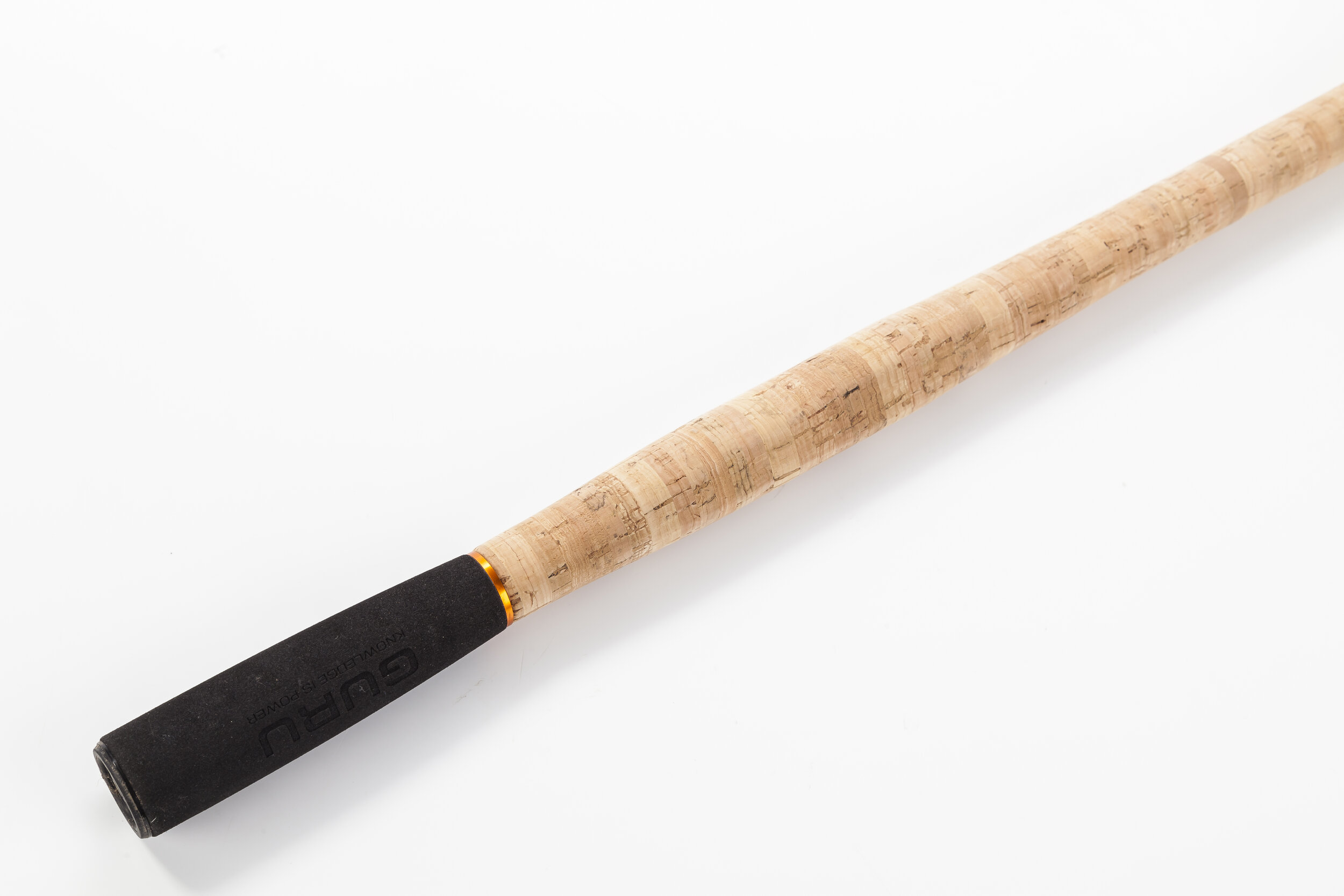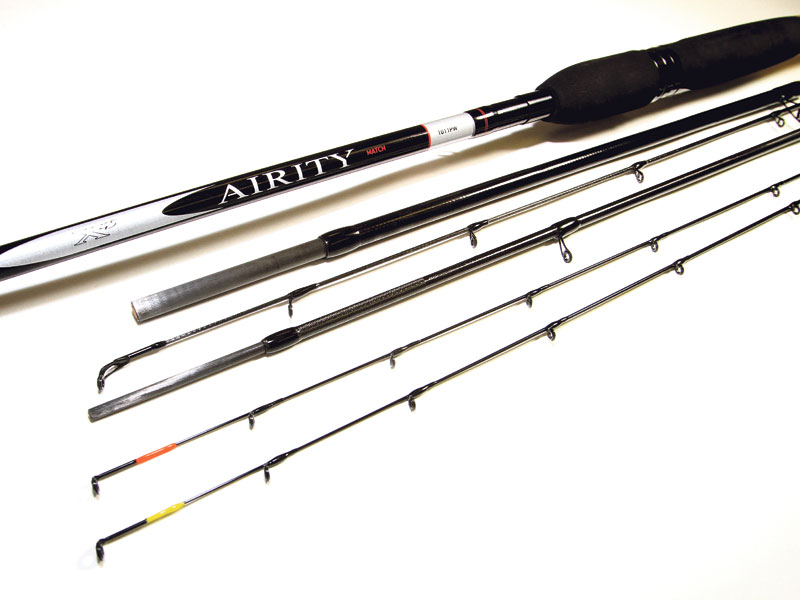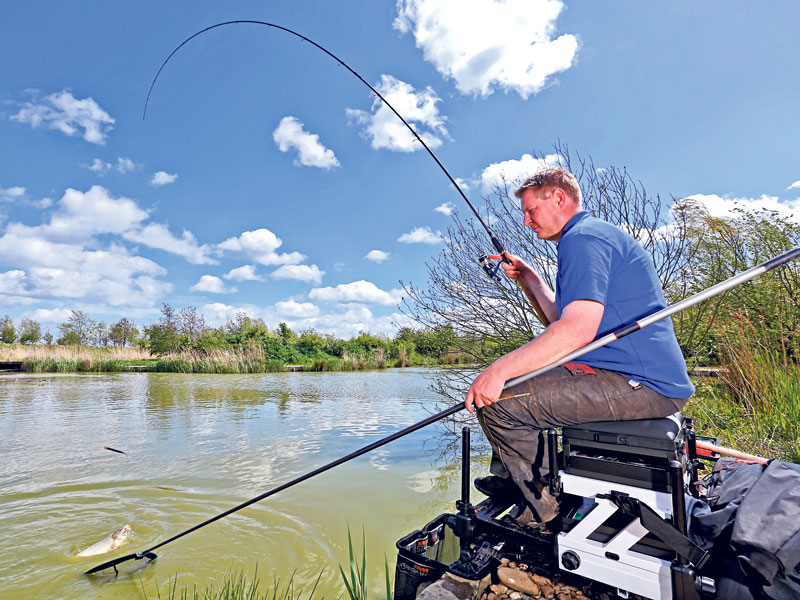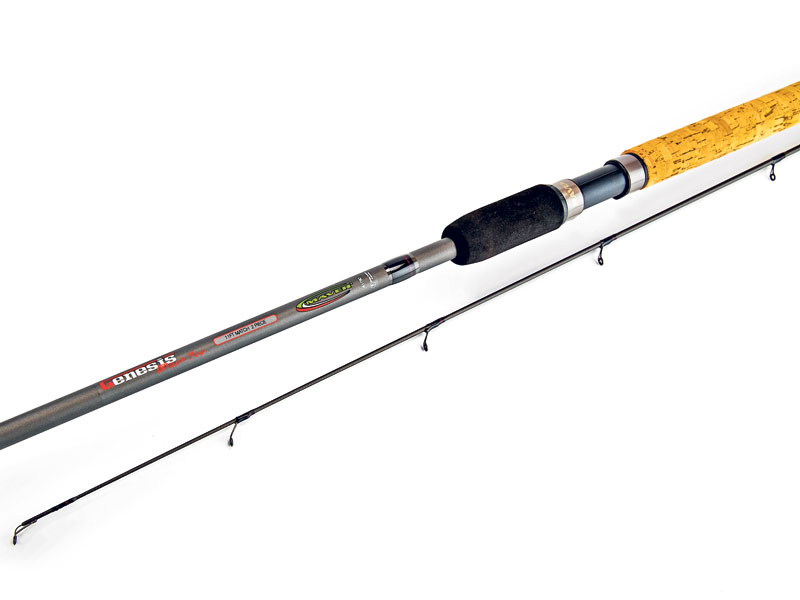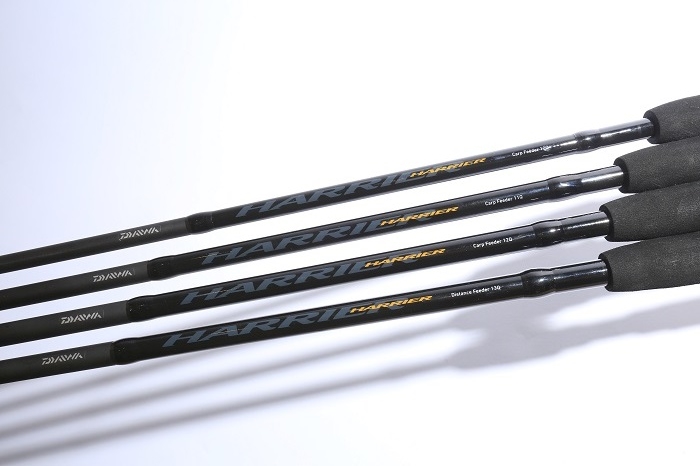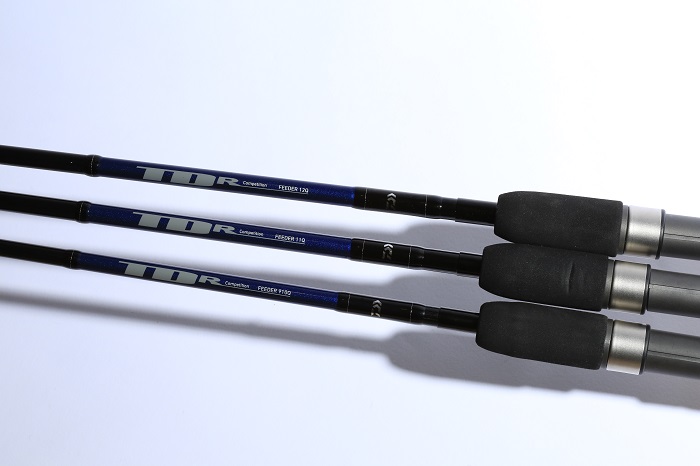Garbolino 9ft Synergy Picker Rod Review
Short rods have become all the rage in recent years.
A large proportion of today’s commercial lakes have the main features at between 15m and 30m range, and a 9ft tool is ample for reaching that kind of distance with ease.
The main benefit of such a short rod becomes evident when you’re playing fish. Get your quarry under the rod tip and the shorter the rod is, the more likely you are to sweep the net under the fish at the first time of asking.
With demand for rods of this length growing, it’s little surprise that ever more manufacturers are ploughing time and money into making new models that fit the bill.
Garbolino has certainly picked up on this modern trend, and its new 9ft Synergy Picker is aimed primarily at those anglers who do a lot of short range feeder and bomb work.
Priced at just under £70, it falls into the category where it will be many angler’s first serious rod. It’s going to be their pride and joy, and they’re going to expect it to perform, feel and look a lot better than the budget starter kit they purchased when just starting out. I can pretty much guarantee that they won’t feel short-changed with this little cracker!
The 9ft Synergy Picker is aimed primarily at those anglers who do a lot of short range feeder and bomb work.
Short range delight
Manor Farm Leisure in Evesham is one of my favourite fisheries, and with short-range work often the name of the game there, it seemed the ideal testing ground for the rod.
A light bomb was threaded on to the 6lb mainline and lobbed 20m out on Ash Pool. The true casting ability of a rod like this doesn’t really come into the equation when fishing at such short range. The true power of the rod would only really be tested if and when the fish played ball.
Thankfully, that didn’t take long, with a big F1 soon snaffling up the 8mm pellet hookbait, sending the reel clutch screaming into life.
It was instantly noticeable that the rod had a good progressive action, and every time the fish lunged in anger, it was absorbed.
That is an important quality when fishing at short range because your whole set-up comes under pressure the split second the hook is set.
The 3lb fish was soon beaten and I hadn’t felt under-gunned. In fact, there was definitely more in reserve should I have needed to pull back aggressively during a more intense encounter with a bigger fish.
Those anglers who prefer to fish further out are well catered for within the range because the Synergy Picker is also available in 10ft or 11ft versions.
It was instantly noticeable that the rod had a good progressive action, and every time the fish lunged in anger, it was absorbed.
All-round promise
Most 9ft rods are developed exclusively with carp and F1s in mind, but the team at Garbolino has tried to make this rod more of an all-rounder.
Three tips have been included – 0.5oz glass, and 0.75oz and 1oz carbon – to provide different levels of bite detection. Stick the lightest of the lot on and the subtle nudges from skimmers and other silvers won’t go undetected.
Three tips have been included
During the test I used the 1oz version. If you’ve ever fished the bomb and pellet at this time of year, you’ll know that you don’t need much sensitivity to spot the rip-roaring bites and a heavier tip helps to set the hook firmly in such situations.
In my eyes, this rod would be equally at home bagging hard-fighting F1s every chuck as it would be on mixed waters where a chunky skimmer could show up one cast and a double-figure carp the next. There’s finesse in its playing action, but it also has a decent amount of backbone in the slimline blank to make sure you are in charge of each fight.
It’s overall appearance is admirable too, with the mixed cork and EVA handle and graphics on the blank helping it to really look the part.
There’s also a few little add-ons that provide convenience, such as the hook keeper ring and a guide on the blank to remind you of what size feeders are appropriate for use with the rod.
The hook keeper ring is a nice add-on
If you’re new to the sport and have come to the conclusion that fishing is likely to become a lifelong obsession as opposed to a post-lockdown fling, this rod will certainly provide that step up in quality you’re after.
RRP: £69.99
This rod will certainly provide that step up in quality you’re after.
Middy 5G Pellet Waggler rod test
I’LL START this review with a confession. Pellet waggler fishing isn’t something that I used to devote much time to, but over the past few months of balmy summer weather I realised I’d been missing out big-time on what is clearly one of the most exhilarating of all tactics.
The anticipation builds the moment the float plops into the water, and that excitement is often followed by an aggressive bite moments later.
Next thing you know, the clutch on your reel is going into overdrive and the rod arches over as a disgruntled carp or F1 does its best to shed the hook.
Clearly, the rod you are using can make all the difference between winning most of these battles or coming back empty-handed.
When the new 11ft Middy 5g Pellet Waggler rod was put into my hands I instantly pencilled in a session at a venue I know would respond well to this high-octane tactic – Manor Farm Leisure in Worcestershire.
I knew what I wanted from this rod, but would it come up trumps? There was only one way to find out…
The rod arches over as a disgruntled carp or F1 does its best to shed the hook.
LAUNCHING INTO ACTION
With the rod rigged up and a couple of pints of 8mm pellets on my side tray I was all set to try and extract a few massive F1s – they run to over 5lb – from Ash Pool.
They love to linger shallow out in the middle but they’ve been caught countless times and can be moody. With a small 3g pellet waggler on the line I went for a 30m chuck and it landed exactly where I had planned it to. It was then a case of feeding a few pellets every chuck, casting over the top and, if there was no response within 10 seconds, repeating the sequence.
As it happens, to begin with the fish were slow to respond to the trickle of freebies falling through the water column, but I wasn’t complaining too much as it gave me the chance to get to grips with the rod’s casting capabilities.
Accuracy was not an issue, as I could plant my small waggler on the button without breaking sweat. There was clearly a lot more fuel in the tank, and had I wanted to chuck a beefier float there was ample power in reserve to do so.
Accuracy was not an issue, as I could plant my small waggler on the button without breaking sweat
The weight of the rod barely registered in my hand, which gained it more brownie points because a light rod is essential for such an energetic tactic where you are casting so often.
Eventually the constant rain of pellets drew a response, with fish swirling at every pinch of bait that landed. The float duly dipped and it was time for the rod to earn its battle colours.
THE PERFECT ACTION
The fish surged off the moment it realised it had slipped up. The softly-set clutch got to work and the rod took on a healthy bend.
A good pellet waggler rod needs to be soft enough to absorb sudden lunges yet have enough grunt to let you take control. With the first fish safely in the net I felt confident it had both qualities in abundance.
A few bigger F1s fought even more ferociously later in the day and the rod handled them faultlessly.
A few bigger F1s fought even more ferociously later in the day
Had I hooked a double-figure carp, I feel sure that a small yet significant design feature of the rod would have helped me land it. The woven carbon area next to the handle prevents the rod bending too much during particularly intense fights in the heat of summer, but I’d be equally happy using it on the deck in the colder months, when bites are hard-won and every fish counts. Its soft action would, I’m sure, keep losses to a minimum. Today the Middy 5G Pellet Waggler had put me in the driving seat, allowing me to cast accurately and then extract anything that took the bait with relative ease.
Safe to say this rod looks the part
Rod cosmetics never caught anybody any more fish, but there is something of the tackle tart in us all – and if the aesthetics catch your attention in a shop there’s a much better chance you’ll part with your hard-earned cash!
Safe to say this rod looks the part. Starting at the reel seat, it seems a little unusual as it’s slimmer than the rest of the handle, but put your hand over the top of the reel and it all clicks into place to make holding the rod a pleasure.
Graphics are neatly etched into the blank, the eyes are appropriately sized and spaced throughout, and little extras such as a hook keeper add to its overall appeal.
Give this beauty a place in your holdall and you’ll have a tool that will never let you down when the bites are coming thick and fast!
A productive rod test!
Price: £99.99
Guru 11ft N-Gauge Pellet Waggler rod review
THERE are so many pellet waggler rods around nowadays that choosing the right one for this popular summertime tactic can be quite taxing.
Their quality and performance, and indeed their price, varies enormously across the various manufacturers.
Kicking off with a brand that has a good track record, then, makes sound sense, and few can rival Guru in this respect.
The company has many excellent products, most of which (including this rod) are aimed at catching big weights of big fish. In this heady atmosphere you want a rod that won’t let you down!
Guru’s new 11ft N-Gauge Pellet Waggler (and its companion 10ft version) promises a balanced action, plenty of power and accurate casting. It’s also comfy to hold, and because pellet waggler fishing involves constant casting and feeding that’s very important.
A balanced action and plenty of power
“But why can’t I just use my normal float rod?” I hear you ask. Well, standard three-piece float rods are designed to catch silverfish using light floats, fine lines and small hooks. Pellet waggler rods are built to chuck an altogether heavier payload – this week’s live test candidate has a recommended maximum casting weight of 15g, which covers just about any size of float you will ever need, while its progressive action handles bigger fish.
Two equal-length sections mean the rod can be carried on to the bank all rigged-up and ready to go.
Two equal-length sections
So, if you fancy having a go at pellet waggler fishing but don’t want to invest too much of your hard-earned on a rod that only really comes out when the sun shines, Guru’s N-Gauge 11-footer will be your ideal fair-weather companion, and I’ll tell you why.
A lot of rod for your cash
First up, if you shop around you’ll find this rod for just under £100, but its impressive array of furnishings belie its price tag. The handle is part cork, part Duplon, offering a firm but comfortable grip, and it’s dressed in super lightweight single-leg reversed guides, strategically positioned along the quality blank to maximise casting and fish-playing performance while minimising the risk of tangles or frap-ups.
Part Duplon handle
All good on paper, but how would it actually perform? To find out I visited a new venue for me, the day-ticket Whetstone Gorse fishery just outside Leicester.
Enter the spacious car park, and on the left is a pretty oval-shaped lake with a large mature central island covered in trees and shrubs.
It was only a few paces from the car to the lake. I could see plenty of carp slowly cruising the upper layers, although most were close to the island cover, and there were a few proper lumps in their turnout.
By the time I’d carried my kit the few yards to the chosen swim the sun had gone in, it was all grey and misty and it had started to spit with rain. Ten minutes later the heavens opened – not exactly ideal pellet waggler weather!
The fish I’d spied moments ago had vanished from view, but when the rain eased, they were back again, and that’s how the day progressed.
They wouldn’t come to the constant feeding pattern normally so successful with this method. Instead they hugged the far bank, and every now and again I’d see a flash as a carp swirled at a falling pellet.
Pinpoint casting accuracy was essential, and the really tippy action of this Guru rod proved ideal for whipping out a smaller lighter float. Every now and again I’d get it spot-on, the float would land silently and the plop of the pellet hookbait right on the carp’s nose would be too much to resist. Basically, this was dobbing with a waggler.
‘just right’ in so many ways
I’ve handled enough rods of this ilk to know that the Guru offering has plenty of oomph in reserve, should I have needed to cast a heavier float further than I did. In practice, of course, pellet waggler rods need only cast as far as a catty can fire an 8mm or 11m pellet.
A fallen tree in my swim at the by now even wetter Whetstone Gorse gave me the chance to test the rod’s stopping power to the max, which happened every time I hooked a fish, and I landed them all bar one – enough to convince me that the 11ft Guru Pellet Waggler is very much a Goldilocks rod… ‘just right’ in so many ways.
Price: £104.99 (but shop around to get it even cheaper)
Free Spirit Hi-S 8ft Feeder rod review
This flagship 8ft rod is ideal when casts of 20m-25m are called for. Like all short rods it’s relatively easy to compress, making it super-accurate even at those tricky shorter ranges.
The Free Spirit Hi-S 8ft Feeder rod is a classy product
In fishing terms, this means you shouldn’t be afraid to cast it properly overhead as you would a normal length feeder rod.
As a top-end model it’s furnished with high quality anti-frap guides, has a cut-away Fuji reel seat that’s said to give the rod more feel, and is supplied with two unique Free Spirit hollow carbon quivers of 0.5oz and 0.75oz.
Supplied with two unique Free Spirit hollow carbon quivers of 0.5oz and 0.75oz.
Longer than standard push-in quivers, these are far less prone to movement post-cast, and they give the blank a highly distinctive fish-playing action.
I’ll make no bones about it, like other models in Free Spirit’s award-winning Hi-S range this is a classy and well-bred rod.
It has plenty of feel when playing a fish, and a casting potential that belies its modest 8ft length. It also packs more than enough backbone to dissuade a big carp from getting underneath your platform.
Price: £269
Free Spirit CTX 8ft Short Range Feeder Rod Review
As its name suggests, the CTX 8ft Feeder comes into its own when accuracy of cast is more important than chucking great distances, making it the perfect rod for snake lakes, small commercial ponds, canals and most short-chuck venues.
It’s equally useful for straight lead tactics just beyond the pole line, or as an alternative to the pole itself when high winds make other options impossible.
The unique action powers up the blank from tip to butt, and an anti-locking fighting curve allows light terminal gear to be used for big fish.
The two-piece blank is of quality carbon, with a Bi-Axis weave. Features include Fuji High Stand Off match guides, original Fuji VSS17 lock-down reel seat and a cork handle with EVA thumb grip. It comes with 1oz and 2oz carbon quivers and another glass tip of 0.75oz.
It comes with 1oz and 2oz carbon quivers and another glass tip of 0.75oz
A great all-round rod, and I wouldn’t hesitate to have one in my holdall. If you like your rods with a bit of action, you’ll love the CTX, and it’s ideal for hooklengths down to 0.10mm and small hooks.
Price: £114.99
The CTX is the perfect rod for snake lakes
Daiwa N'zon S Method Feeder rod test
I’M a sociable enough bloke, but like everyone I enjoy my own company now and again. So, what better way to spend some outdoor ‘me time’ than fishing a small river for chub?
When I go match fishing, I typically arrive at my peg loaded down like a pack mule, but today I was travelling light, carrying nothing more than a rigged-up quivertip rod, a landing net and a small shoulder bag holding all my little terminal tackle items.
It was a typical winter’s morning, with a clear blue sky and frosted grass that crunched underfoot as I made my way to test Daiwa’s new 11ft N’zon S Method Feeder rod.
Looking downstream from the footbridge, the River Nene wound its way across the surrounding fields, and even in the half light of dawn, it didn’t take me too long to spot a few areas that looked good for a bite or two.
Watercraft is all about reading the flow, with its creases, ebbs and glides, and learning how to spot fish-holding features. Undercut banks, floating rafts of vegetation, and overhanging trees are all likely to hold a chub or three.
As I trudged along I couldn’t help but remember my old man’s advice. “Stay quiet, stay low, but don’t stay too long, boy,” he would say.
The chub is an enigmatic species. Sometimes its greed overrides caution, and I have on more than one occasion caught the same fish twice in a day. That said, the majority of the time they can be incredibly wary and easily spooked.
All-round performer
When it comes to trying to find the perfect small-river chub rod, I’ve tried the lot over the years – expensive hand-built-models, off-the-peg big-name brands, even cut-down float rods – all the while seeking that perfect action that blends a soft, cushioned tip with a steely but forgiving mid-section that morphs into something with enough poke to halt a snag-seeking chub in its tracks.
I began to think that the perfect small-river chub rod was little more than a wishful thought but then, out of nowhere, like a genie from a lamp, up popped the rod I was using today.
Now, don’t let the name fool you, because it’s a small-river masterpiece. The pencil-slim carbon blank has a lovely through action, with not the merest hint of a flat spot, but despite its dainty demeanour it’s certainly pokey enough to turn the head of any plump chub.
Its weight casting rating is bang-on at around 50g (2oz), which means it will handle most sizes of feeders, but most importantly for me it will handle the small-bodied 20g and 30g wire cage models I use when feeding liquidised bread alongside breadflake hookbaits.
Having walked the river and fed a few areas, I figured that my best chance of a fish or two would definitely come from a spot near the far bank where a back-channel met the main flow, forming an area of flat water on the surface – it absolutely screamed ‘chub!’
Action stations!
It wasn’t the easiest of casts, with little room for error, but the N’zon propelled my cast straight and true, and with a satisfying ‘plop’ the feeder hit the mark. The line tightened against the stream, and the quivertip set into a perfect curve.
Not 10 minutes had passed before a familiar ‘tap, tap’ on the tip indicated there was a fish in residence. The rod whacked round as if the hookbait had been engulfed by a barbel and not the modestly-sized chub that splashed its way into the net 30 seconds later.
It’s safe to say that it wasn’t my biggest chevin, and it was followed by two more of a similar size. No doubt yet another ribbing in the Angling Times office would ensue. But you know what? I didn’t care. I’d had a lovely morning wandering along the river and was more than content with my lot.
As I strode back along the bank towards the car, the rod was so light in my hand that I barely noticed I was carrying it – yet another big plus-point of this magical little wand.
Take it from me, if you want a rod that will handle all you can throw at it on commercial fisheries, and double-up as a superb little river-roving tool for chub and silverfish in winter, this two-piece jewel from the Daiwa stable will put a spring in your step.
Price: £95, www.tackleuk.co.uk
Preston 10ft Supera SL feeder rod review
NOT all rods are designed to launch a bait over the horizon – and Preston Innovations’ two new Supera SL Feeder rods are the fishing equivalent of middle-distance runners.
Both the 10ft and 11ft versions deliver those shorter casts when bream, roach and skimmers are the target.
A soft, seamless through action prevents hook pulls that can lose you a match, yet the rods double up as the perfect winter commercial fishery tools for F1s and carp on maggot feeder and straight lead tactics.
That much I’d already been told through reading the blurb, but to confirm these claims I treated myself to a day’s live testing of the 10-footer on Decoy Lakes Fishery near Peterborough.
The famed Beastie Lake plays host to plenty of skimmers and roach, while its gravel bottom is paved, not with gold but with F1s, barbel, and a truckload of fit and fat carp. However, like many fisheries that get bashed by matches all weekend, Monday is go-slow day for the inhabitants.
I plonked myself on a peg renowned for its head of skimmers – the fact that it had also delivered 100lb of carp the day before meant I felt confident of getting a few pulls, while also getting a feel of the very rod Lee Kerry used to win the Feeder Masters final last year. I tried to ignore the weather – it was cold enough for icicles to form on a polar bear’s bum.
There are a couple of commercial fishery tactics you can rely on in the cold – a straight lead set-up with corn, or a small blockend carp feeder with maggots. Both have their moments, but the maggot feeder seems the better bet for silvers when you’re faced with cold and slightly coloured water.
Given these conditions, most matchmen favour lightweight feeder or bomb rods – normal carp or Method feeder rods don’t have enough finesse to be teamed with light hooklengths and small hooks. What you really need is a rod with a softer action – enter the Supera SL.
My session was progressing very slowly, so I began to fine down my end tackle to a point where I might reach critical mass if a decent-sized carp rocked up.
As I was pondering this, round went the 0.75oz tip, not to the delicate inquiry of a roach or skimmer but the full-frontal assault of something far meatier.
It was clear to me at this point that the rod had undergone some serious field-trialling from the talented Preston match team – the blank’s seamless action was peerless. Not only did it deal brilliantly with the little chaps, but the carp squad too. Neither overgunned and pokey, nor sloppy and soppy, it performed like an A-list celeb.
Classy Sea Guide rings are perfectly placed along its two-sectioned high modulus carbon body, while a reduced length cork and EVA handle make it manageable to cast and set up. It comes with three graded quivers of 0.5oz, 0.75oz and 1oz.
Summing up, the Supera SL is an ideal all-round winter commercial lead rod with plenty of flexibility. In its 10ft incarnation with the lightest 0.5oz quivertip fitted it’s a proper little charmer, ideal for snake lakes (naturally), small pools and ponds, in fact anywhere that demands light lines, small hooks and short casts.
Mark’s verdict
IT’S true that many matchmen use the same feeder rod both summer and winter, but these are the same people you’ll hear bawling out expletives when they lose a fish at the netting stage.
Take it from me, this isn’t going to happen when you fish with a Supera SL, and you’ll be so much more popular with the angler at the next peg. Who needs splashy dramatics from your near neighbours when there’s coin to be won?
Price: £159.99 (but shop around)
Guru 11ft Aventus Feeder rod review
FEW rods on the market can boast the pedigree of the quartet that make up the Guru Aventus Feeder range.
They were designed by Guru’s expert match team, and no stone has been left unturned in terms of quality and innovation.
That, though, is only half the story. The rods are manufactured and dressed in the UK by Daiwa, using the finest carbons and the best possible fittings, and they are engineered to a premium grade that pushes carbon specifications to their limit.
A unique double layering of multi-directional carbon fibres gives the blanks unparalleled linear strength, so they retain their tubular cross-section when the rod is compressed on the cast.
Add in a super-fast tip recovery speed, pleasing crispness and a lightweight feel, and the end result is accurate, precise casting, coupled with impressive power on the strike. In truth, the Aventus range covers all styles of feeder-flinging, whether that’s a delicate approach with thin lines and small hooks or chucking a payload to the horizon.
Three graded push-in quivertips come with each model, giving you plenty of flexibility as conditions dictate. The rod on live test duty, the two-piece 11ft Aventus Feeder, suits the better part of all your commercial feeder and straight lead tactics.
Despite its modest length you only have to have a cast or two to appreciate what it is capable of doing. Using a mini 30g Guru Hybrid feeder and giving the rod a hefty whack using 8lb mainline, the feeder hit the clip hard at 17.5 wraps (75 yards), with plenty still left in the casting locker should I have needed it.
The action of this Aventus reminded me a lot of the original and still much sought-after Carbotec Feeder. Both feel as though a ribbon of elastic has been threaded through the blank, so forgiving is it when playing a big fish.
The Aventus, however, benefits from cutting edge tech and is dressed with seriously good fittings, including oversized Fuji Alconite K-Guides. These are seemingly bulletproof, and will prevent most snarl-ups and tangles. All are ideally positioned to achieve perfect casting compression and playing action.
The Grade A cork handle is considerably longer than you’re expect on an 11ft rod and the added leverage, so I’m told, makes for longer and more accurate casts.
If there’s a tiny shadow on the horizon, it’s the price. At a penny under 400 quid it certainly isn’t cheap, but as with all things, you get what you pay for. The 11ft Guru Aventus Feeder really is as good as it gets.
Price: £399.99
Verdict
GURU’S Aventus rods have been around for a while now, and I have heard many comments about them – good, bad and indifferent. However, as a tackle editor I try to keep an open mind, taking any rod as I find it, rather than basing my judgement on its price or reputation.
The casting power of the 11ft Feeder belies its fabulous cushioned fish-playing action, miraculously married to a steely mid-section that adds to its big-fish credentials.
For me the handle was a little long for an 11ft rod, but I can see why Guru went down that road – for a little ’un it packs one hell of a cast!
GURU AVENTUS 11FT FEEDER TECH SPEC
Length: 11ft l Sections: Two
Recommended line: 3lb-10lb
Casting weight: 70g
Tips: Three – 1oz, 2oz and 3oz
Other rods in the Aventus range:
10ft Guru Aventus Feeder
12ft Guru Aventus Distance Feeder
13ft Guru Aventus Distance Feeder
Shakespeare Agility Continental Feeder rod
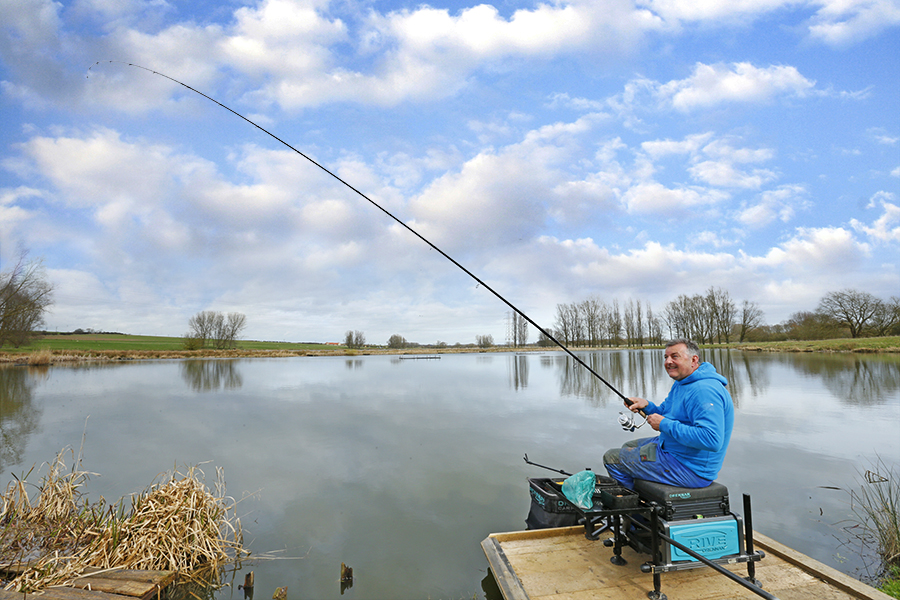
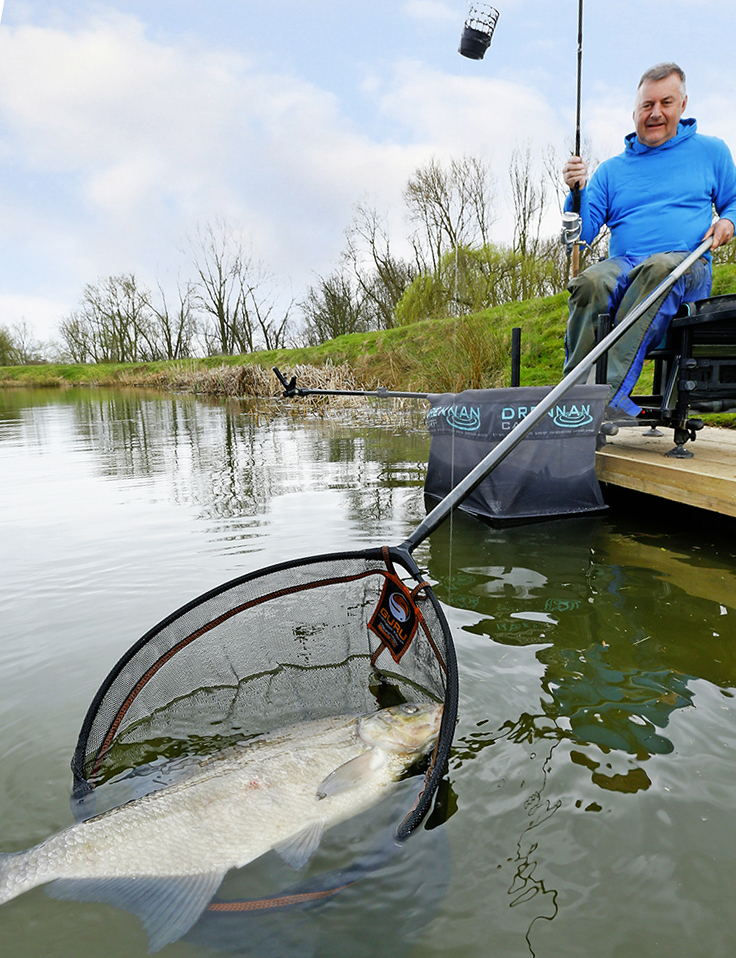
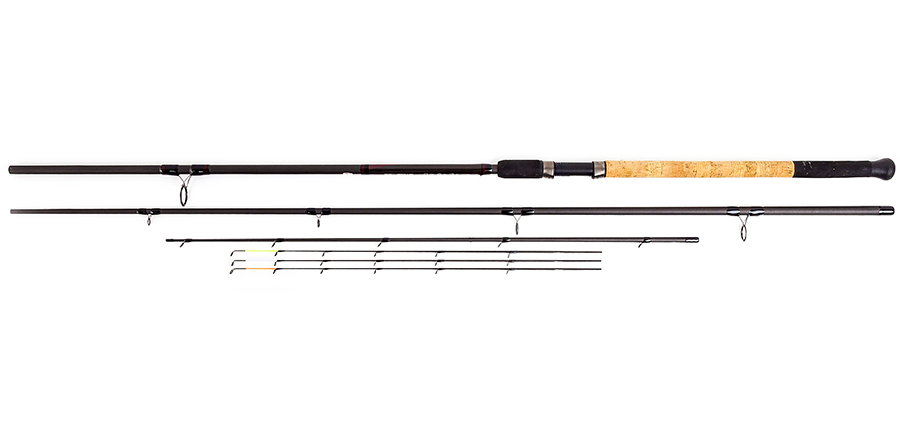
TECH SPEC
Slim carbon blank
Enlarged Zirconium guides
Ergonomically-designed reel seat
Rubber butt cap
Satin matt finish
Maximum mainline rating - 12lb
Recommended maximum casting weight - 5oz
Mono and braid-friendly guides
Shakespeare Agility Continental Feeder rod. This range of continental feeder rods bearing the famous Shakespeare mark is aimed squarely at fans of big, open-water venue fishing.
Designed and constructed to cope with the heaviest of feeders, the fastest of flows and the longest of casts, the rods come in 12ft, 13ft and 14ft lengths and are well-suited to the pursuit of big bream from expansive, deep venues. So why would these rods be of any interest at all to the UK match angler, I hear you ask?
Well I’ll tell you. It was brought to my attention that the 14ft Agility Continental in particular has furtively become one of the most sought-after long-chuck big feeder rods on the market. And not just for targeting stillwater bream either; it’s also rumoured to be very much ‘at home’ on big rivers such as the Severn and Trent. A quick call to Shakespeare revealed my source’s information to be well-founded; the company are currently completely out of stock of the 14ft model, due to an apparent surge in interest. However, the Alnwick-based firm did have the other two lengths in stock, and could get one sent out for live testing purpose immediately.
Although I would have liked to get my mitts on the 14ft model, I wasn’t overly disappointed at it not being available, as I wouldn’t be casting huge distances into really deep water, or using ultra-long hooklengths. A 14ft feeder rod is a highly-specialised tool, and on the rare occasion I have used them - which has been mainly in Holland - they have always felt a little bit alien, so I was more than happy with the 13ft model which I was sure would prove just as good as the slightly longer version.
Two days later the rod dropped on to my desk, and I couldn’t wait to get a look at it. A quick in-office inspection revealed a pleasing matt satin-finished three-piece high-modulus carbon blank. It has been designed with an ‘old-school’ fast-tapering casting action, with more than enough poke through its middle and butt sections to make distance casting a doddle.
Plus, it’s also got a high weight loading point, which kicks in around halfway down the carrier section, meaning it shouldn’t feel wobbly or unbalanced when a heavy feeder is attached to it. Other key features included three carbon push-in quivertips and a superb set of enlarged-diameter Zirconium Oxide guides, ideal for use with all braided and mono mainlines, and certainly wide enough to allow the safe snag-free passage of shockleader knots.
With the river closed season now upon us, I was slightly limited with regards to venue choice, especially as the bream stocks in most of the large acreage open-water venues such as Ferry Meadows are still only just waking up from their winter slumber. However, I knew that the Northants day-ticket lake Rysons was normally good for a few early spring slabs, and as it’s a fair chuck out to the middle of the lake where the fish normally reside, it would prove a fair casting test for the rod.
My set-up involved using a 10lb fluorocarbon shockleader, tied to a 0.10mm braided mainline, with a 40g distance cage feeder at the business end of things. The first task was to lay the table, so I made a dozen quick casts to the lake centre using a big cage feeder loaded with pellets, groundbait and dead red maggots. The blank hardly flexed during the loosefeeding process, with the mainline hitting the clip easily on every cast and the shockleader fairly sizzling through the rod’s enlarged guides. The blank’s casting action is best described as clean and crisp, but if I were to be hyper-critical I’d say it’s maybe a little on the heavy side. However, with minimal recoil, I knew it would be no bother at all to achieve extreme casting ranges.
An hour later the rod’s tip trembled, followed by the unmistakable steady pull-round as a big slab picked up the treble maggot hookbait. Two minutes and two big head shakes later we parted company when the hook pulled out. Unfortunately, this scenario unfolded three more times before a change to a larger hook and a longer hooklength remedied the problem. Quite simply, the blank’s power can be a little overwhelming when used with smaller hooks, but when coupled with wide gape hooks from a size 14 and upwards, the problem pales into the background.
To summarise, the rod has superb distance-casting credentials and is available at a snip of the price of most distance feeder models. As well as being an awesome tool for tackling large stillwaters at home and abroad, it would make an excellent rod for targeting all fish species on our larger domestic rivers.
THE VERDICT
This 13ft Agility Continental has power with a capital P to burn. Originally designed for the European feeder angler, the rod is ideal for big open-water UK venues, and is also sure to find favour with many river anglers, especially where hefty feeders up to 5oz and strong lines up to 12lb are needed. Price wise, for a long-range heavy feeder rod, it’s the best by some margin of those currently available on the market.
PAY AROUND
£74.99
Mark Sawyer
Drennan Acolyte Plus Compact 13ft review
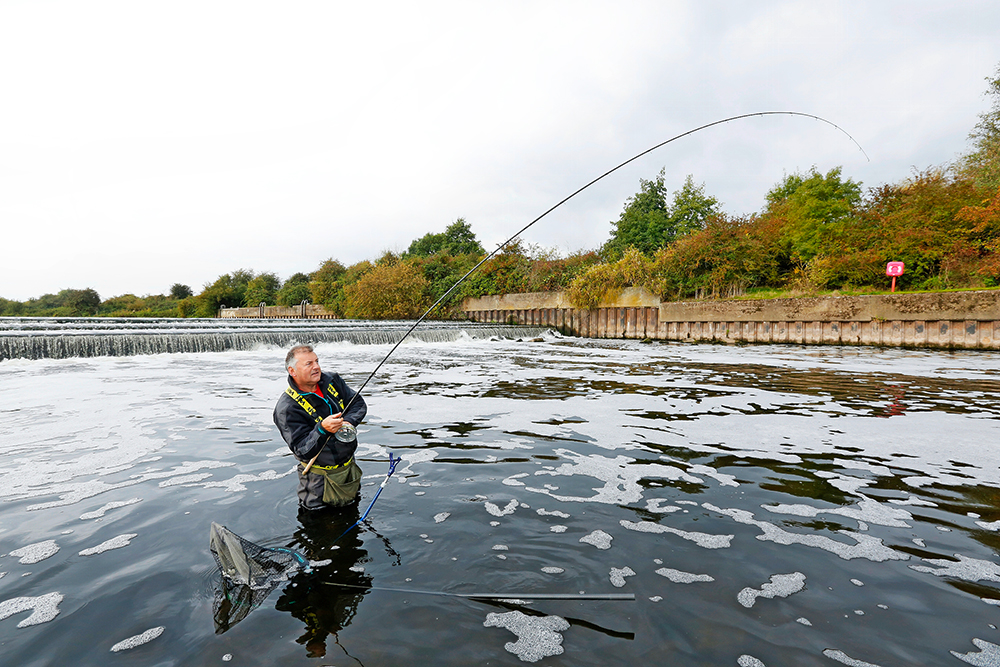
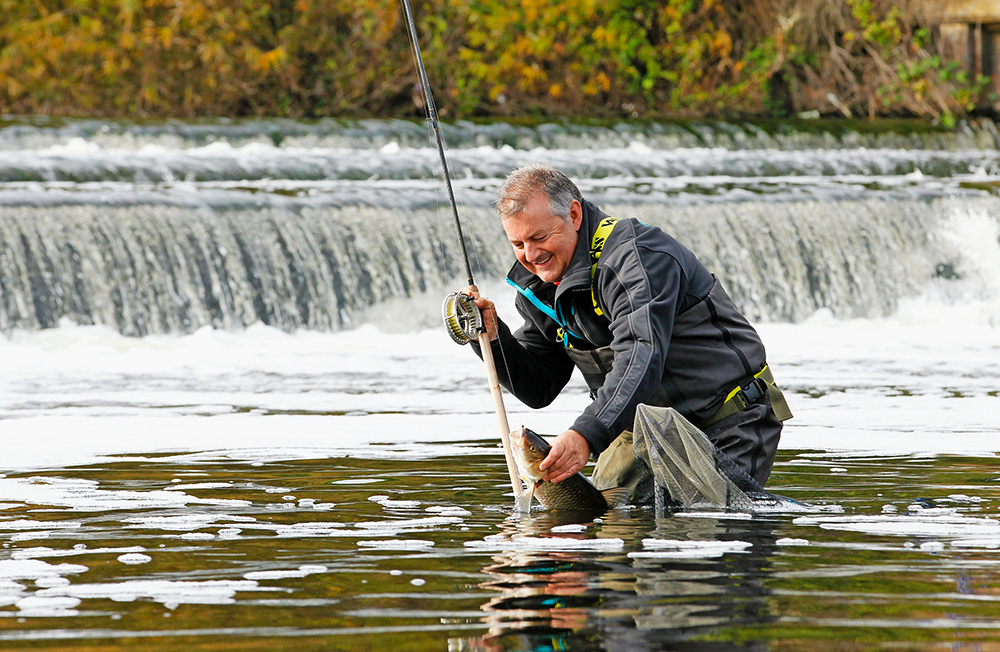
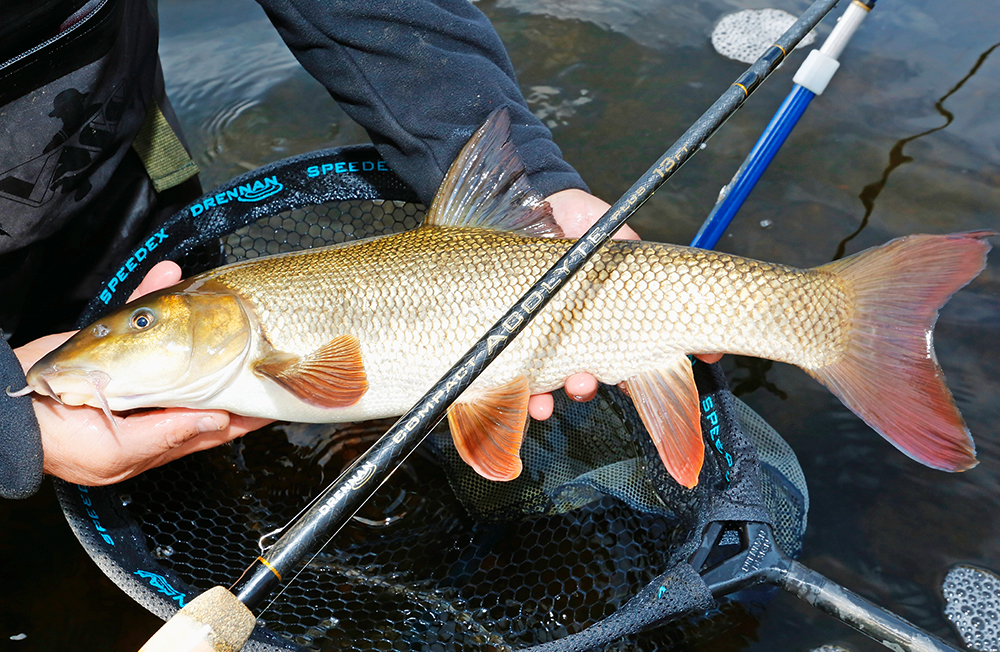
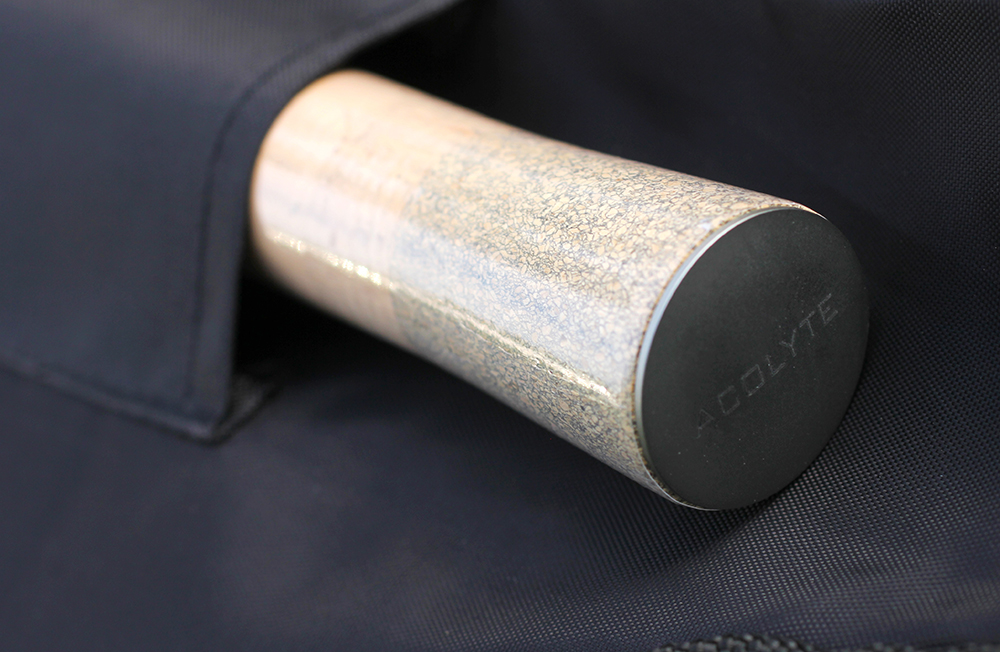
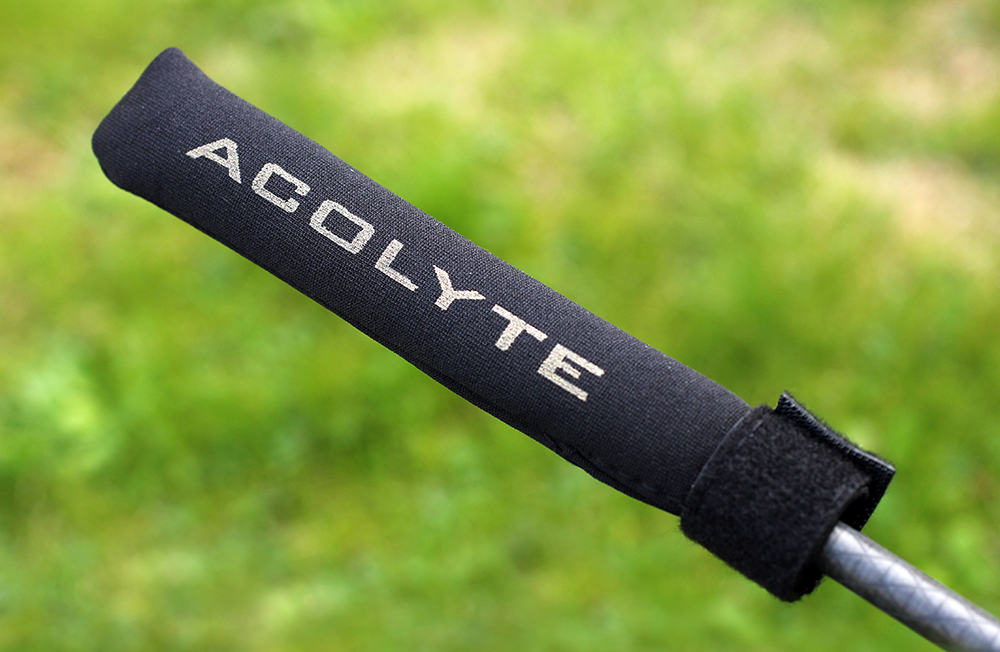
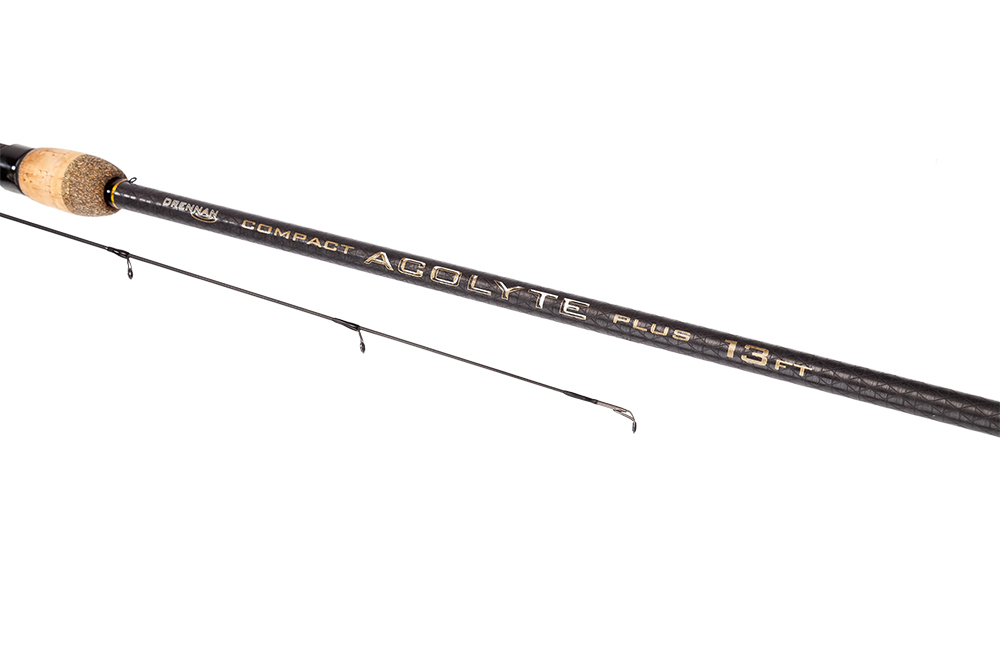
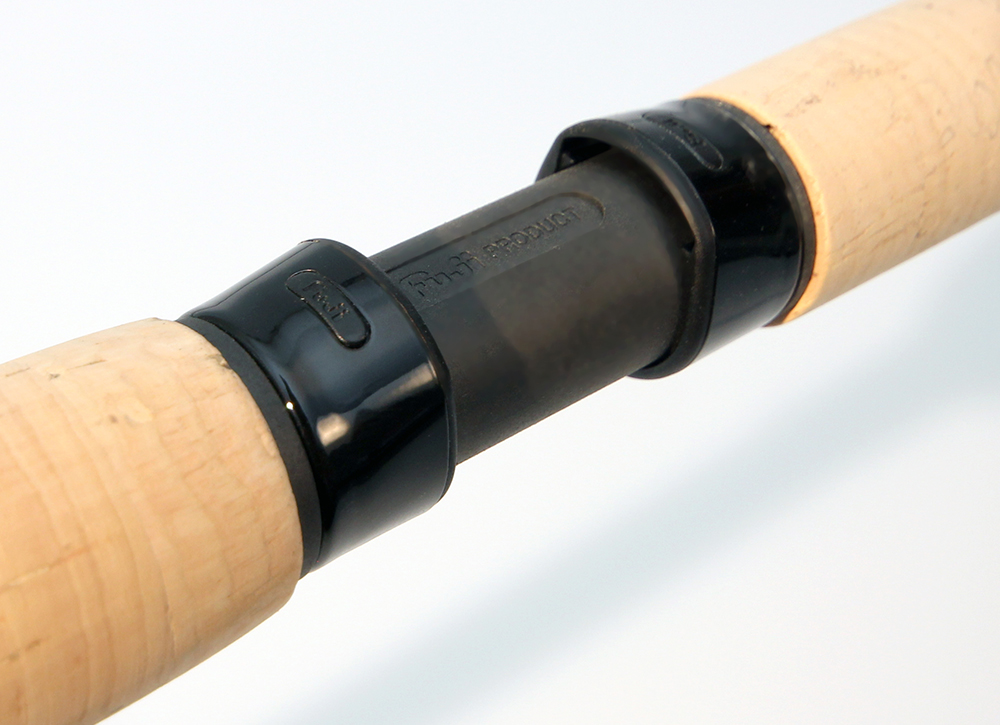
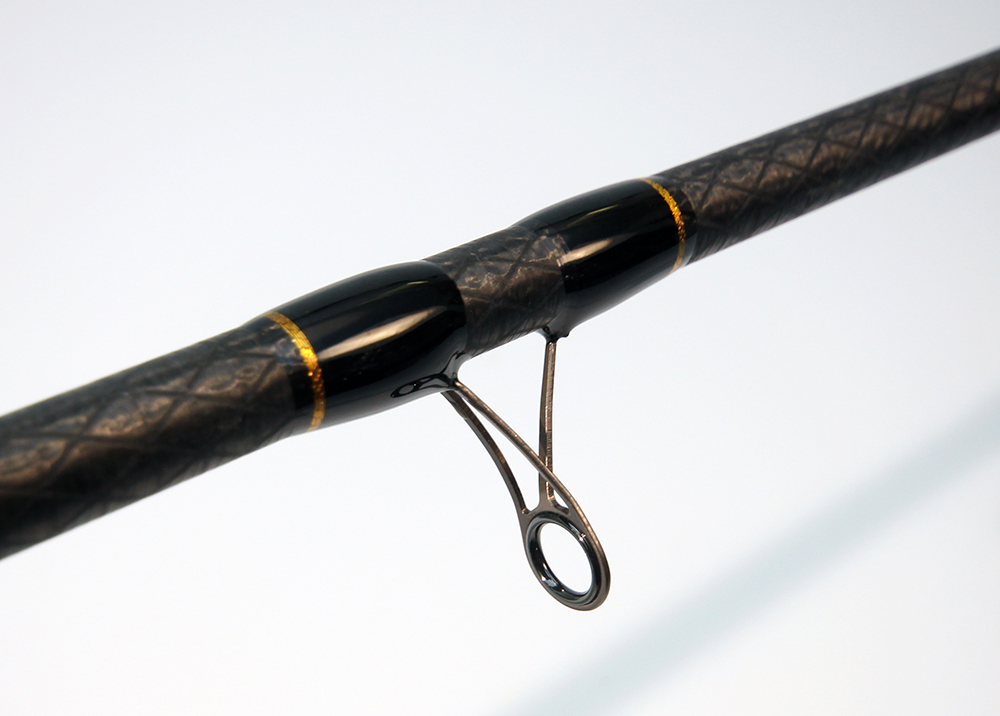
TECH SPEC
Length: 13ft
Pieces: Two
Reel lines: 4lb - 6lb
Hooklengths: 3lb (0.13mm) - 5lb (0.16mm)
Supplied with: Padded rod sleeve, retaining bands and rod socks
PAY AROUND
£209
Widely considered to be the best available, Drennan’s award-winning 13ft Acolyte match rods need little introduction.
The original super-light (4.5oz) Ultra makes floatfishing on rivers and lakes a pleasurable experience. The rods have a crisp yet forgiving action teamed with a viper-fast striking speed that can still set a tiny hook without fear of snapping off gossamer-fine hooklengths.
So, with all the boxes ticked, why would Drennan even think about making changes to these rods? Well, the company has… and yet it hasn’t. Let me explain. For those who prefer the original three-piece Acolytes, these rods remain unchanged and widely available.
However, they have been joined by two new Acolyte Compact versions, the 13ft Ultra and the stepped-up 13ft Plus.
These new two-piece rods have a patented design that enables the bottom 31cm of the handle to be unscrewed, leaving you with two similar length sections that can be quickly, easily and safely broken down with your rigs in situ. That’s never before been possible with 13ft match rods, unless of course you want to risk tip breakages, or spend more time untangling your rigs than setting up again from scratch.
The Compact Acolyte’s two sections are said to actually improve the rod’s balance and action by having just one ferrule in front of the handle, rather than the usual two, and that makes perfect sense.
But rather than simply just take the manufacturer’s word for it we took the Compact Acolyte Plus to the bank to see for ourselves – already all-but convinced by Drennan’s impeccable rod-building prowess.
As with the original three-piece Acolyte Plus model, the new Compact has the power to cast large floats and subdue quality fish. Essentially it’s a stepped-up version of the Ultra, but where would you use it? Well, it’s ideal for all long-range waggler and sliding float work, but legging-up a few skimmers and roach isn’t really much of a live test.
What was needed was a venue where we could use a big float and heavy line to catch something that pulled back – and not a carp!
Waters around Nottingham available on a Scunthorpe AA club book are among the finest on the Trent. So, armed with the Compact Plus fitted with my precious Hardy Conquest centrepin reel and little more than a few top-and-bottom floats, a pocketful of accessories and some bait – not forgetting the waders – I was off to a shallow, picture- postcard stretch where the float rules.
Wading into the shallows, surrounded by white foam created by the crashing weir behind me, I found a flat crease around four rodlengths where I thought the float would pass unhindered over the rocky riverbed.
Feeding Dynamite Baits Hemp with Snails, mixed in with small pieces of the meat carried in my bait apron, I soon realised why it’s important to use a light rod and reel combination. Regular feeding, and constant casting soon take their toll, especially when you’re not used to it.
But I have to say the Drennan/Hardy combination was as light as thistledown, and I fished for several hours without need of a rest. Casting a 4g alloy-stemmed Avon float proved effortless for the Acolyte Plus, and it could have easily handled double that weight.
It also fairly snapped the line off the surface with little more than a flick of the wrist – no great sweeping arcs of strike needed here to hit the bite, as the rod has a super-fast action with virtually no recoil or tip bounce.
I must admit I feared the worst, striking at distance with a two-piece 13ft rod, but my fears were groundless – it’s just perfect.
But the rod’s crowning glory is its awe-inspiring parabolic action. Its top section has a cushioning tip that tightens further down to generate a ‘power play’ fighting curve quite capable of handling the largest of fish.
That was proved as some whacking great chub and ‘never say die’ barbel were beaten in white water – after putting up the kind of scrap that would have given most other rods one hell of a beating!
VERDICT
Well, I’ll keep this short. During the live test I did lose a few fish, all very big barbel. It had nothing at all to do with the rod, it was simply poor preparation on my part, as I hadn’t loaded my reel with a heavy enough line.
This episode played on my mind all week, so I simply had to return and have another go. Reloading the reel with something more substantial, and re-rigging the rod at home, meant I could safely carry the made-up rod in the car all ready to go.
The result was my biggest-ever barbel on a float rod, estimated at 10lb-12lb. It fought like a demon, and no wonder I shall be forever grateful to Drennan’s new Compact Acolyte Plus.
Shakespeare Superteam Match 13ft rod
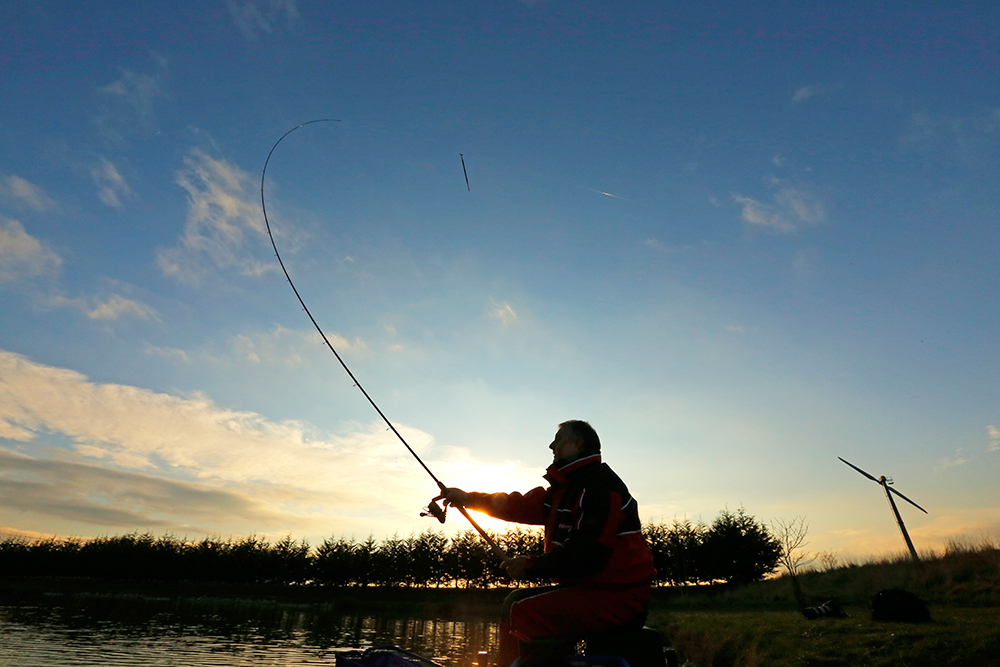
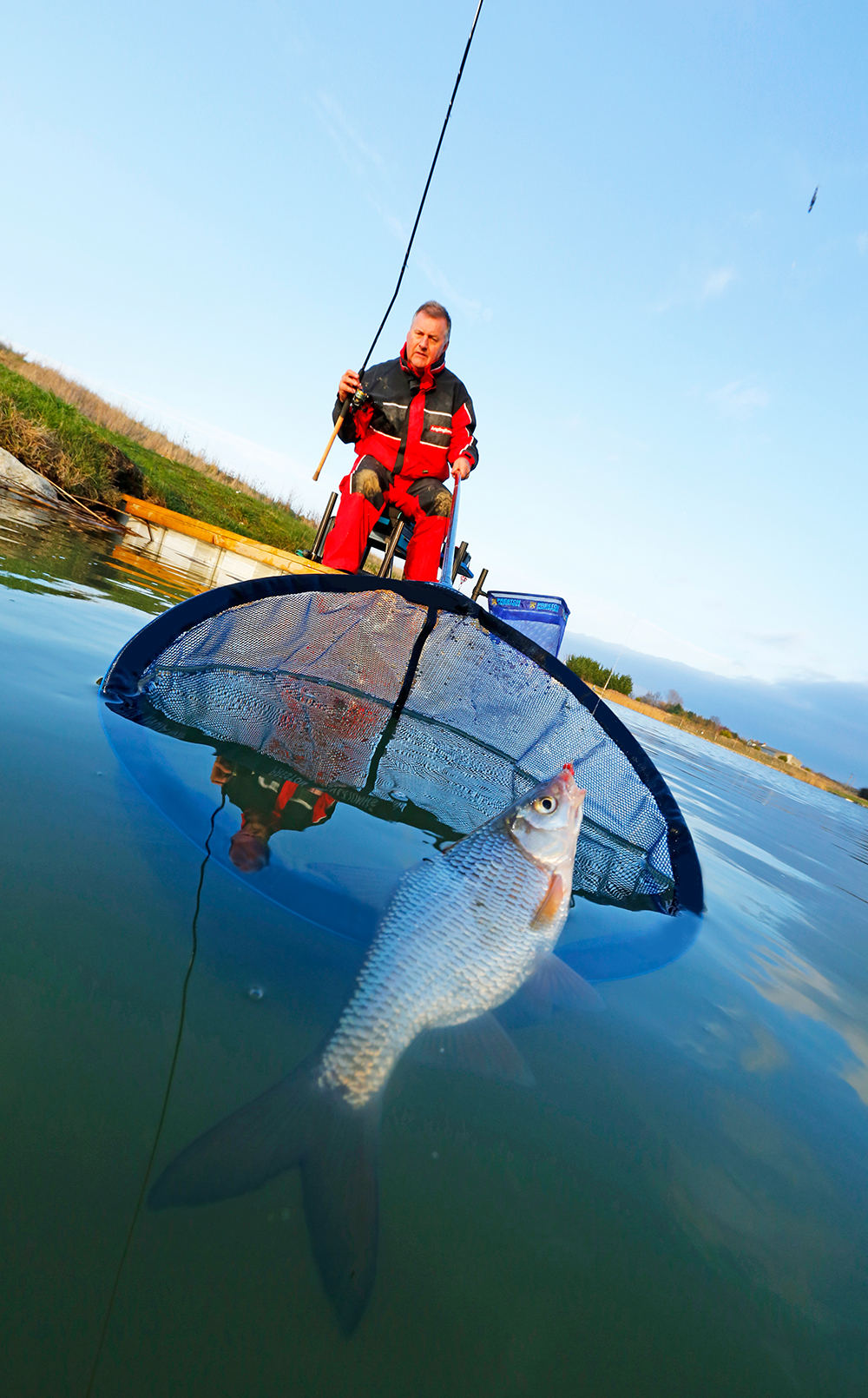
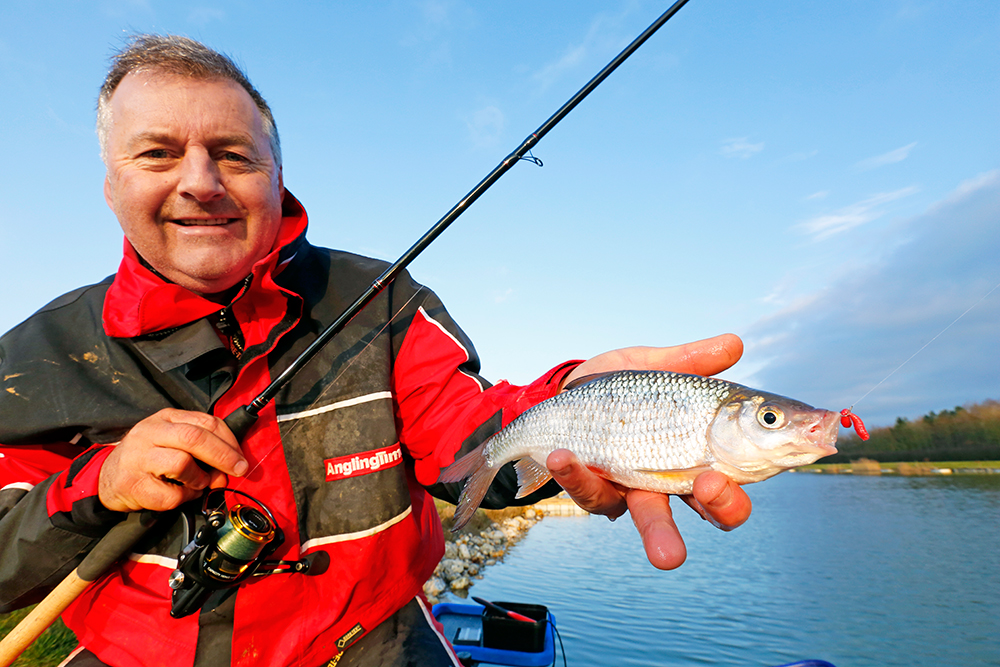
TECH SPEC
Length: 13ft
Power rating: 6lb
Pieces: 3
Handle: Cork/EVA
Rings: Zirconium
Extras: Side keeper ring
PAY AROUND
£89.99
You could do worse than use the Redditch tackle giant’s products down the years as a means of charting the development of the modern match fishing rod in terms of materials, furnishings and specifications.
A potted history of Shakespeare notables would show the fibreglass Match International as a rod ahead of its time. This was followed by the excellent, if rather expensive, President which I believe was the first carbon fibre rod to be built with a spliced-in tip.
Then we had the superb Mach 2 Boron which held centre stage with matchmen for many seasons, but was eventually superceded by the Mach 3 carbon. Since then we have been blessed with the firm’s high-modulus carbon Superteam model, launched in 2014.
Shakespeare did, of course, introduce many other match rods but those listed above were widely recognised as being as good as it got back in the day. Remember, it wasn’t all that long ago that match fishing was all about using a waggler or stick float to catch winning nets of roach, chub, dace, perch or bream, the tool of choice being a 13ft, three-piece.
The finesse to deftly flick a small waggler across a canal, cleanly pick up line from the surface when long trotting and cast bodied wagglers or sliders into deeper water on rivers and lakes, are qualities we expect of any good match rod.
That brings me nicely on to Shakespeare’s Superteam 13ft match rod which really is a jack of all trades and will take all these tasks in its stride. Yes, this rod was first introduced a few years back, but that doesn’t make it in the least bit tired or dated. It remains to this day one of the best all-round match-style float rods that few others can hold a candle to.
The three-piece pencil slim carbon blank is nice and light in the hand, making it easy to hold for long spells, and a requirement of any good river rod. Worthy of note are its zirconium oxide guides that enable almost friction-free line travel, very useful when trotting a river at the pace of its current.
Its fast, progressive action doesn’t lock up under stress, so when you hook into a really big fish the blank will absorb and keep absorbing its runs and lunges with no fear of the line snapping. At the same time it has the backbone to boss fish away from snags.
Live testing the rod was interesting, as I already had some idea about the Superteam’s performance from an earlier Angling Times review. This time, rather than take it to a carp puddle or river, I thought I would test the blank’s sharpness and line pick-up qualities on a deep venue I knew held some big roach and decent ide.
Waggler tackle with small hooks and maggots, coupled with a nagging easterly side wind, wasn’t perhaps the ideal mix for a decent day’s fishing. But I needn’t have worried – Shakespeare’s finest 13ft of carbon cast a hefty three-swan insert waggler with ease and unerring accuracy.
With the float set at 12ft deep, line pick-up speed was central to hitting bites and the rod didn’t disappoint, connecting time and time again with the most tentative of enquiries.
As the fish responded to the feed they started coming up in the water, and bites became lightning-fast.
Now the line needed to be whipped from the surface at a rate of knots, and yet again the rod performed impeccably. Not merely a jack of all trades but a master of them all.
VERDICT
Another pure class floatfishing rod from the Shakespeare stable and perfect for silverfish, the Superteam 13ft is tactically flexible and ultra-reliable. Use it with confidence, however light the terminal tackle. Its anti-locking nature and progressive action allows it to cope with sizeable fish, something that cannot be said of many old-school float rods.
Tri-Cast Trilogy Commercial Pond Wand
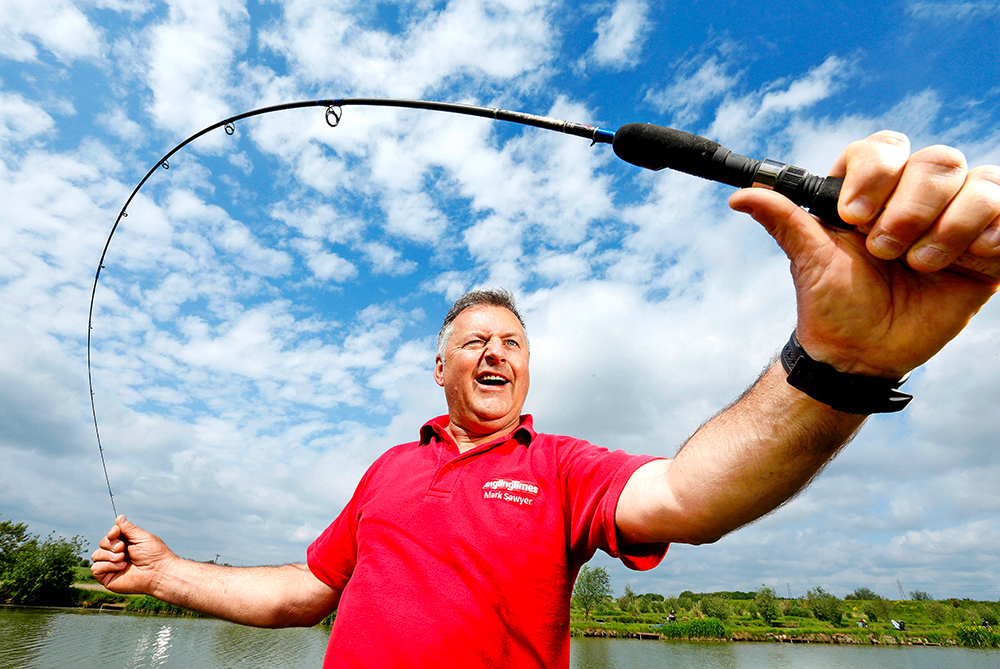
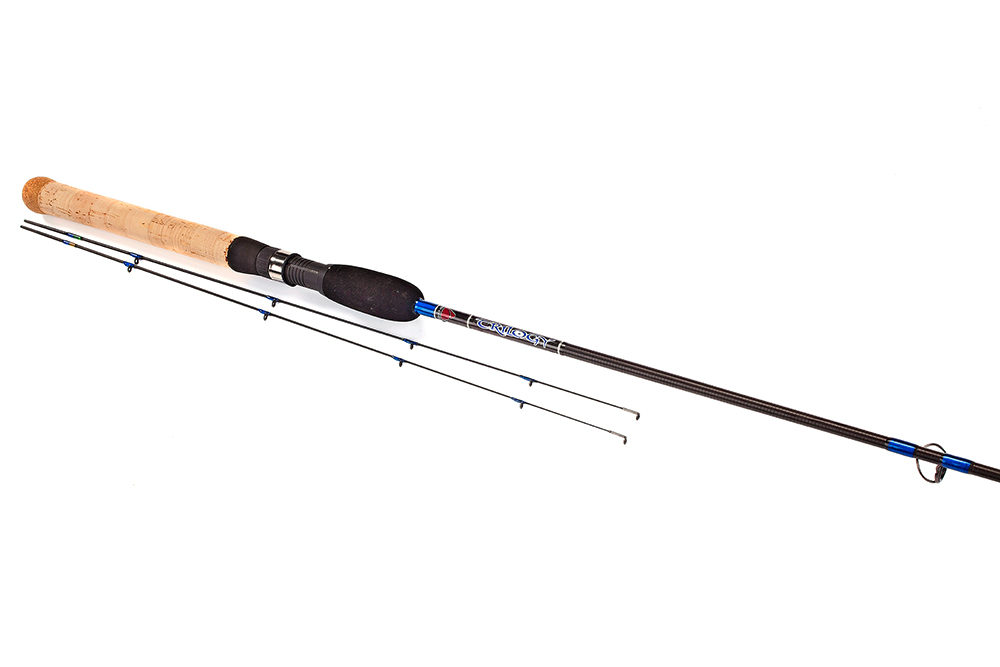
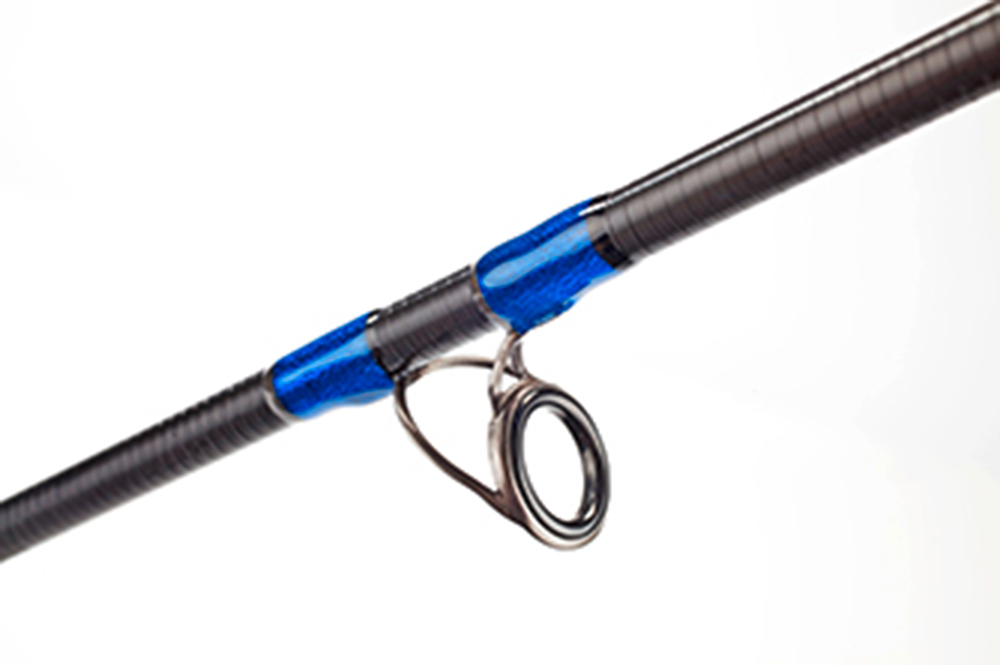
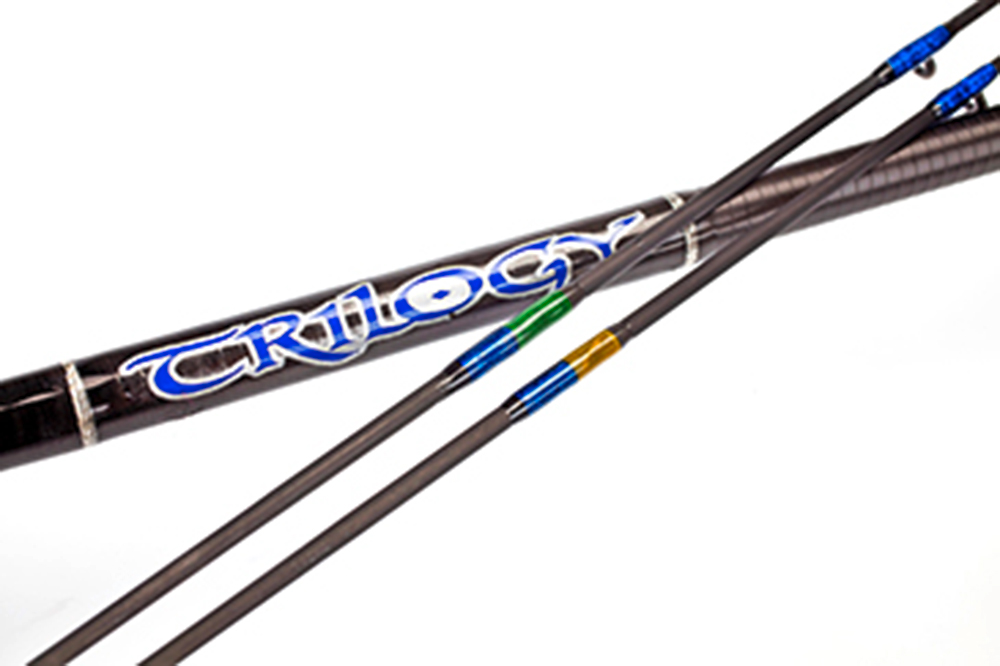
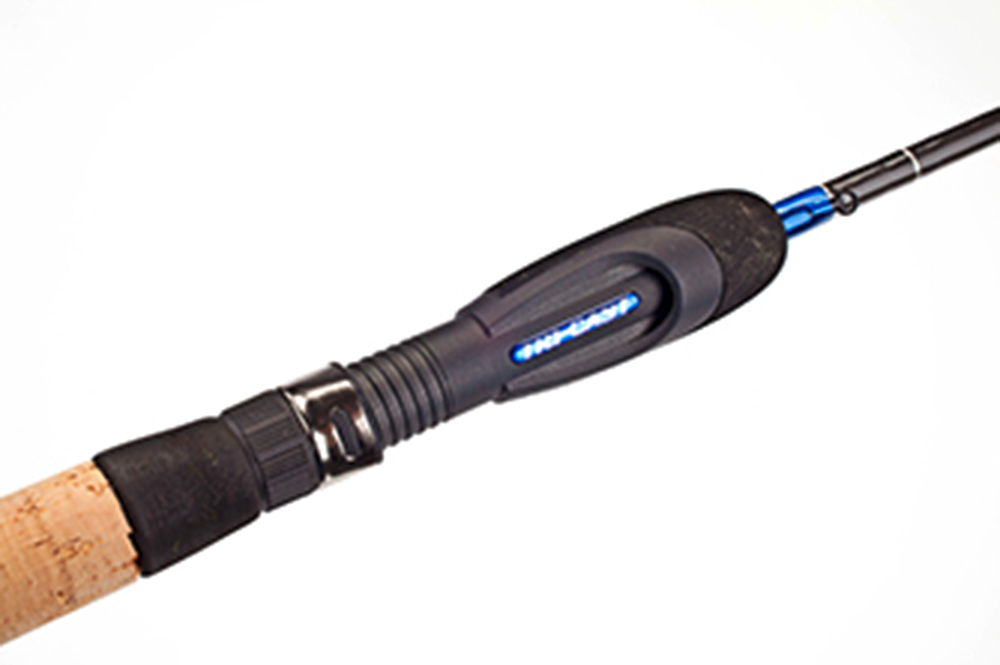
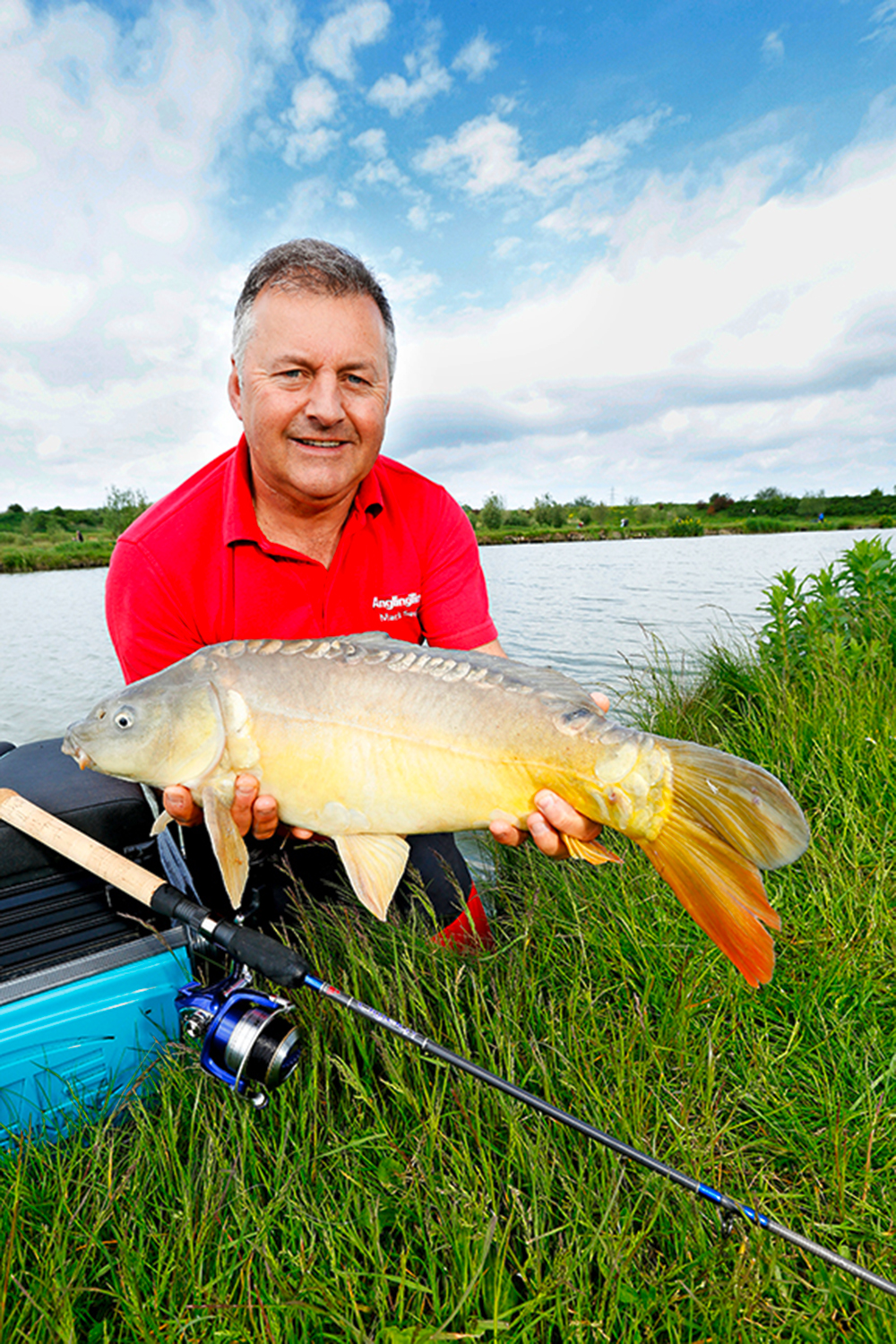
PAY AROUND
£109
I must confess that as I slid this single-sectioned rod from its transit tube my first thought was: ‘What am I supposed to do with this thing, then?’ No emails please!
To the very best of my knowledge the quaintly-named Tri-Cast Pond Wand (it only says Trilogy on the blank) is the only one-piece match/pleasure fishing rod I have ever come across.
At only 4ft 10ins long, without one of its two 21ins supplied quivertips fitted, it’s also got to be one of the shortest.
But my question was quickly answered when I rang Tri-Cast’s brand manager Steve Hopkinson. He told me he had designed the Trilogy Commercial Pond Wand himself, to be used on the pole line when weather conditions make pole fishing difficult.
Apparently Steve had lost out on a probable match-winning peg when the wind had picked up so strongly that it made fishing at 16m nigh-on impossible for him – let’s face it, we’ve all been spun round on our seatboxes by the wind at some point in our career.
What Steve thought he needed to combat the elements was a diminutive wand-like tool which could be used to accurately swing a small feeder or straight lead underarm and on to his pole line without having to tighten up to it and risk moving his bait offline.
The construction of a single-sectioned rod isn’t quite as easy as you might think, mainly because the length of taper is vastly reduced. This doesn’t give the technical design team much to play with in terms of the casting and fish-playing performance of a blank.
But, as you might expect from one of the UK’s leading carbon manufacturers, Tri-Cast appears to have cracked this conundrum with ease.
The ridiculously slim blank is built from the same high modulus carbon cloth as the firm uses for the other members of its Trilogy Commercial rod family. It’s fitted with five low-profile Ultra-Light lined guides (which, incidentally, are made in the USA), and is nicely furnished with electric blue whippings, with an additional whipping at the end of the carrier section to prevent the fine-walled carbon from splitting when fitting its 1oz or 1.5oz push-in quivertips.
So, without further ado, let’s find out how this tiny terror performs on the bank. The strip lakes at Decoy are rightly renowned for two things – the large size of their occupants (great) and the endless Fenland easterly wind which seems to blow non-stop (which isn’t that great). But in this rare instance the hooley provided ideal testing conditions.
Without a doubt, the first thing you notice will be an almost overwhelming reluctance to cast it as you normally would – overhead. Yes I agree, that might sound a bit far-fetched, but believe me it isn’t. You WILL want to flick it out underarm.
I have used plenty of petite drop shot rods, overhead casting them without a problem using light lures or jigs. But not so with this rod. It just seems to lend itself better to a gentle swing-out.
It’s not as though the blank won’t cast properly, as later on during the live test I chucked a fully loaded 15g Method feeder 25m with no problems.
The single-section blank manages to generate a completely perfect flat-spot-free parabolic fish-playing action, and considering its diminutive dimensions it has all the tenacity of an angry Jack Russell, happily hanging on to anything you might hook into.
As my confidence in the rod began to rise I actually clipped up the reel at 16m to keep my feeding and accuracy really tight, and to see if I’d get away with it if something really big came along.
Yes, I did indeed manage to bank a near-double, but it was all bit too heart-stopping and not something I would recommend.
There simply isn’t enough stretch in the mono at that distance, so you’re more likely than not to be snapped off if there are real zoo creatures about.
Basically it’s easier and much safer to tie a little bit of fine pole elastic on to the reel line as a distance gauge, or have a set of wrap sticks set up behind your box – which for 16m distance is about 4.3 wraps on 12ft markers.
VERDICT
Basically this delightful little rod is likely to be the most fun you’ve ever had with 6ft of carbon fibre. It weighs next to nothing, is easy to transport once you’ve removed the quivertip, and it easily fits inside a standard ready rod holdall. The short handle makes it easy to manoeuvre, and if you set it up with the tip pointing virtually straight out in front of you, there’s no need to adjust the line after casting to keep you bang on the money every put-in.
Shakespeare Superteam Match 13ft rod
TECH SPEC
Length: 13ft
Power rating: 6lb
Pieces: 3
Handle: Cork/EVA
Rings: Zirconium
Extras: Side keeper ring
PAY AROUND
£89.99
You could do worse than use the Redditch tackle giant’s products down the years as a means of charting the development of the modern match fishing rod in terms of materials, furnishings and specifications.
A potted history of Shakespeare notables would show the fibreglass Match International as a rod ahead of its time. This was followed by the excellent, if rather expensive, President which I believe was the first carbon fibre rod to be built with a spliced-in tip.
Then we had the superb Mach 2 Boron which held centre stage with matchmen for many seasons, but was eventually superceded by the Mach 3 carbon. Since then we have been blessed with the firm’s high-modulus carbon Superteam model, launched in 2014.
Shakespeare did, of course, introduce many other match rods but those listed above were widely recognised as being as good as it got back in the day. Remember, it wasn’t all that long ago that match fishing was all about using a waggler or stick float to catch winning nets of roach, chub, dace, perch or bream, the tool of choice being a 13ft, three-piece.
The finesse to deftly flick a small waggler across a canal, cleanly pick up line from the surface when long trotting and cast bodied wagglers or sliders into deeper water on rivers and lakes, are qualities we expect of any good match rod.
That brings me nicely on to Shakespeare’s Superteam 13ft match rod which really is a jack of all trades and will take all these tasks in its stride. Yes, this rod was first introduced a few years back, but that doesn’t make it in the least bit tired or dated. It remains to this day one of the best all-round match-style float rods that few others can hold a candle to.
The three-piece pencil slim carbon blank is nice and light in the hand, making it easy to hold for long spells, and a requirement of any good river rod. Worthy of note are its zirconium oxide guides that enable almost friction-free line travel, very useful when trotting a river at the pace of its current.
Its fast, progressive action doesn’t lock up under stress, so when you hook into a really big fish the blank will absorb and keep absorbing its runs and lunges with no fear of the line snapping. At the same time it has the backbone to boss fish away from snags.
Live testing the rod was interesting, as I already had some idea about the Superteam’s performance from an earlier Angling Times review. This time, rather than take it to a carp puddle or river, I thought I would test the blank’s sharpness and line pick-up qualities on a deep venue I knew held some big roach and decent ide.
Waggler tackle with small hooks and maggots, coupled with a nagging easterly side wind, wasn’t perhaps the ideal mix for a decent day’s fishing. But I needn’t have worried – Shakespeare’s finest 13ft of carbon cast a hefty three-swan insert waggler with ease and unerring accuracy.
With the float set at 12ft deep, line pick-up speed was central to hitting bites and the rod didn’t disappoint, connecting time and time again with the most tentative of enquiries.
As the fish responded to the feed they started coming up in the water, and bites became lightning-fast.
Now the line needed to be whipped from the surface at a rate of knots, and yet again the rod performed impeccably. Not merely a jack of all trades but a master of them all.
VERDICT
Another pure class floatfishing rod from the Shakespeare stable and perfect for silverfish, the Superteam 13ft is tactically flexible and ultra-reliable. Use it with confidence, however light the terminal tackle. Its anti-locking nature and progressive action allows it to cope with sizeable fish, something that cannot be said of many old-school float rods.
Daiwa Harrier Match 13ft rod
PAY AROUND
£54.99
There was a time not so long ago when a three-piece 13ft float rod was standard issue for all match anglers.
Sheffield, Leeds, Rotherham and Birmingham all boasted legions of matchmen whose angling clubs were linked to massive national industries and working men’s clubs. Every weekend would see charabanc outings to the banks of the Witham, Welland, Trent or Severn, where floatfishing was still king and legering came a very poor second.
The best float rods of the day were mainly built on a Golden Jubilee blank, reappearing as WB Clarke’s
All-England, Milbro Enterprise or Billy Lane Match rods.
The first carbon rods weren’t far away, though, and when Fothergill and Harvey’s carbon blank appeared in 1975 they cost a king’s ransom at £133. The early carbon rods, nowhere as good as today’s, cost the equivalent of over £3,000, as much as you’ll pay for a modern flagship pole.
This history lesson earns a place here because 13ft float rods, once the most popular on the market, have evolved tremendously and are available at a steal of a price.
One such model is Daiwa’s 13ft three-piece Harrier Match, which can be found for as little as £44.99.
The rod is built on a decent enough lightweight blank, making it easy and comfy to hold. Its medium-fast action will cast small 3AAA wagglers with no trouble, and it boasts a full cork handle with an EVA lock-down foregrip, lined guides and a matt low-glare finish.
It isn’t the crispest float rod I have ever come across, and it may lack a bit of finesse. But what it can do in spades is handle whatever comes its way – something I was to find out while I was live testing the rod at Boston’s Westwood Lakes.
I had set my stall out for a net of roach and ide, or maybe the odd bream, but the tea-stained Kestrel Lake looked that dirty, I’d have been content to get a bite from anything.
With Storm Imogen racing with unstoppable force across Lincolnshire, this was far from being the best of conditions for floatfishing.
Still, with a 0.10mm hooklength and size 20 red maggot-baited hook on a slow-falling rig, something would surely have a go… wouldn’t it?
It seemed like an age for the bite to come, but eventually it did, and the blaze-coloured float tip sank slowly beneath the surface.
The strike was met by a little more resistance than I had expected, and the rod instantly took on an alarming fighting curve. This action, best described as on the through side of progressive, is pretty much what you want from a float rod if you’re likely to encounter bigger fish.
At first I thought I’d hooked, or even foul-hooked, a carp, hardly what I wanted from a silverfish session, and especially since I was using such lightweight terminal gear.
But as the scrap progressed it became obvious that I had hooked into one of the lake’s legendary barbel.
My balanced tackle was never more welcome than when I slipped the net under a pristine winter Bertram!
The Harrier Match, a long way from being one of Daiwa’s most expensive rods, had absorbed every lunge without my ever breaking sweat that I might get busted up and lose the fish.
Yes, it can be used for small silverfish, but take it from me, the Harrier is capable of an awful lot more when called to battle stations – just like its aircraft namesake, in fact.
VERDICT
On a day when everything but the roach wanted to feed, the Daiwa Harrier proved itself as a great silverfish all-rounder, with enough backbone to cope with much larger quarry when the need arose.
The rod would be well suited to a mixed commercial fishery, where the next bite could come from a matchbox-sized rudd, a powerful carp or, best of all, a belting barbel.
Mark Sawyer
Daiwa Airity Match and Feeder rods
PAY AROUND
£375-£450
Daiwa has used its tried and trusted Tournament blanks to create this new nine-model Airity series. The extra performance of the latest X45 carbon material is said to offer improved torque and power conversion.
The Airity hybrid 10ft/11ft is every bit as much at home casting a pellet waggler as it is a Method feeder, and will be of great interest to commercial matchman. Look out for an exclusive live test here soon.
Maver Genesis Black Ice 11ft Match rod
• EVA twist grip
• High quality lined guides throughout
• Quality graphite screw reel fitting
• Folding hook keeper ring
• Action: Tip; Through action
• Casting Weight: 60g-90g
• Line Rating: 3lb-8lb
• Weight: 185g inc tips
• Featuring the stunning ‘Black Ice’ carbon finish and top quality fittings throughout. Supplied with three carefully graded tips.
Sometimes tackle can suffer from being labelled ‘one method and one method alone’. Margin poles are one example.
Pellet waggler rods are another, leading the customer into thinking that they can only be used for very specific tactics. The truth is often very different.
Match rods are a case in point. The tag may evoke images of stick float fishing on rivers with 2lb hooklengths, but with modern design, materials and build techniques your standard match tool can actually achieve a great many things. Maver’s Genesis Black Ice 11ft Match rod falls nicely into that category.
Don’t let the ‘Match’ part of its name put you off – this rod has been designed for pellet waggler fishing on well-stocked commercial waters, but its action and softness make it perfect for a spot of roach bashing on lakes and rivers too. It’s the ideal all-rounder for the angler who may only be able to afford or want one rod in their rod bag.
Made from high modulus carbon, the two-piece Black Ice packs a lovely through action, with ample softness in the tip to allow you to fish with light lines when needed.
However, Maver had both eyes on carp when building this rod, and it’s when you gear it up with a 6lb mainline and a loaded pellet waggler that the Black Ice really comes to life.
Soft it may be, but it’s not so sloppy that your casting will be all over the place. There’s enough poke to pick up line to hit fast bites, and more than enough guts to land big fish.
It’s also very light, weighing just 185g, so you can fish with it in your hand all day with no fatigue at all.
Testing took place on Magpie Lake at the up-and-coming Rookery Waters in Cambridgeshire, chucking a loaded 8g waggler to a bed of lily pads at around 40 yards.
Despite a brisk Fenland cross wind, the control that the Black Ice gives you on the cast sees the float landing time after time in the right place, essential when you’re building up a swim.
Landing the float is only part of the battle, though – some rods can fall down on the strike. Too sloppy an action and you simply can’t pick up the line in time, but the Black Ice is deceptively good at doing this.
Even with a bit of a bow in the line, a forceful strike made short work of those lighting bites that often come just as the waggler settles.
There’s also enough grunt to get carp away from snags quickly when you need to ‘hit and hold’ as soon as the hook is set. Get a fish within netting range, though, and the rod takes on a very soft action, bending right the way through the blank at times but never leaving you with the feeling that you’re in any way undergunned!
Finished with top-quality SiC guides, graphite screw reel fitting, EVA twist grip and folding hook keeper ring, the Maver Black Ice is the ideal rod to carry made up in a rod sleeve, all ready to take on whatever your summer of fishing is about to throw at you!
Richard Grange
Daiwa Carp Match and Feeder Rods
PAY AROUND
£34.99
Simply astonishing value for money, this affordable five-rod range will almost certainly join Daiwa’ best-sellers next year.
The two-piece blanks are made from a medium grade of carbon fibre, and offer a quick line pick-up and seamless fighting curve free from flat spots, making them a joy to play fish on.
Daiwa Harrier Match and Feeder Rods
PAY AROUND
£49.99-£59.99
The iconic Harrier rods have been reincarnated as well balanced carbon blanks, with a fast action suiting everything from pellet waggler fishing through to heavyweight feeder fishing.
All eight rods in the series (other than the 13ft Waggler) are rated for use with up to 8lb mainlines.
Daiwa Yank ’n’ Bank Match and Feeder Rods
PAY AROUND
£74.99
As the name suggests this six-rod series has been developed for bagging-up. High catch rate commercial waters often respond best to pellet waggler and feeder tactics, and these rods really are built to deliver.
With Daiwa’s latest powerful progressive actions, the pencil thin two-piece blanks come in padded ready-rod carry bags.
Daiwa TDR Match and Feeder Rods
PAY AROUND
£225
These latest top-end Daiwa rods are built from a high-performing new carbon material. Best suited to commercial venues and tactics, the impressive range covers seven rods, all with powerful progressive actions and perfect for speed fishing. All feeder models are supplied with two carbon quivertips of 1oz and 1.5oz.

